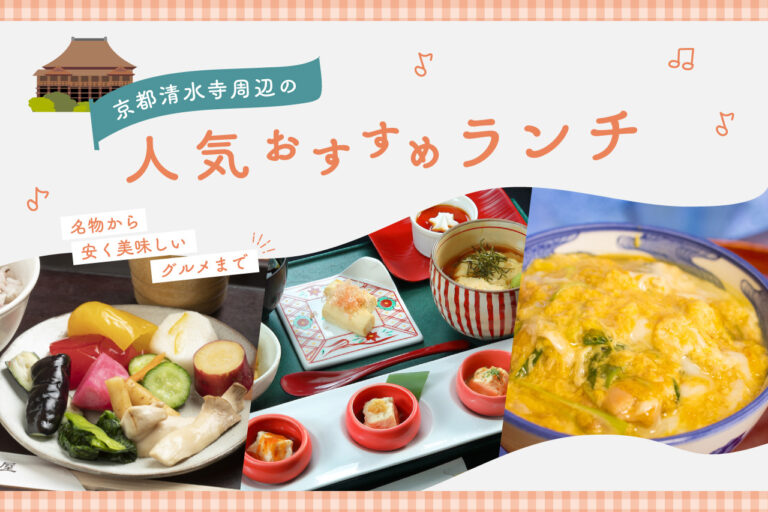
17 popular recommended lunches around Kiyomizu-dera Temple, Kyoto! Specialty...
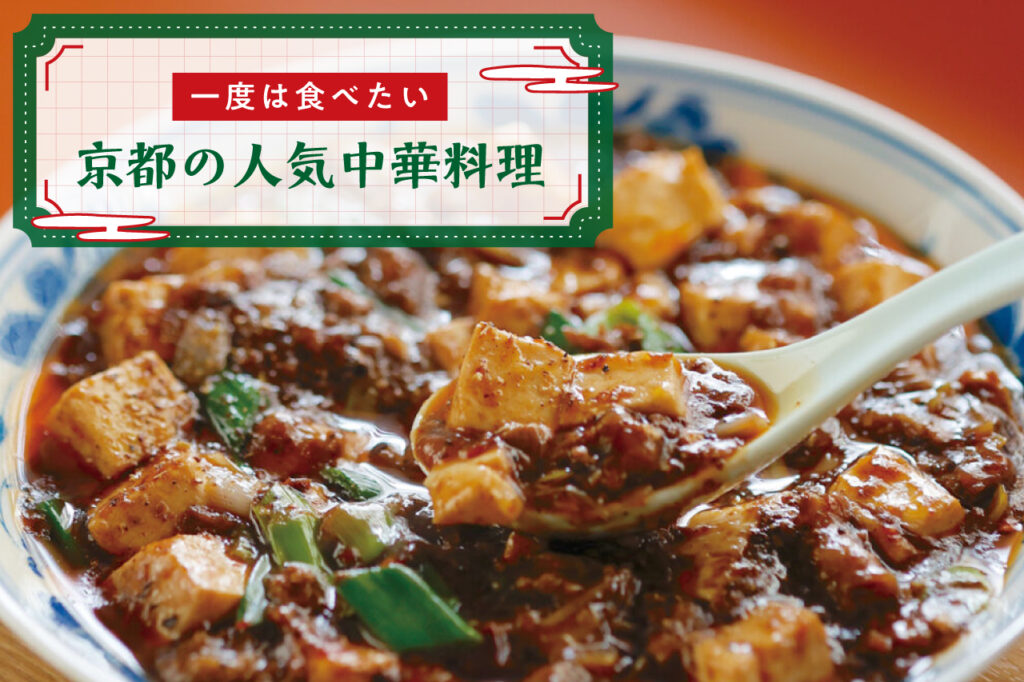

Kyoto is home to numerous Chinese restaurants. This article introduces some of Kyoto's best Chinese restaurants, from Machichuka, beloved by locals, to Michelin-listed upscale restaurants. In the cold winter, warm your body and soul with hot Chinese food. (TEXT/Saori Yoshikawa, EDIT/Miki Tamura)
Founded in 2002 by Shigeo Taguchi, the last apprentice of Chen Jianmin, the first master chef, who was awarded the "Contemporary Master Craftsman" and "Medal with Yellow Ribbon", since May 2021, his son, Takanori, has been preserving the taste of the master chef. Takanori trained at Kyoto Hotel Okura and EXIV Kyoto Yase Rikyu, and has supported his father since Kasho was located in Hyakumanben. His heartwarming cuisine, which reflects the chef's careful preparation, has many fans not only from the local area but also from other prefectures.
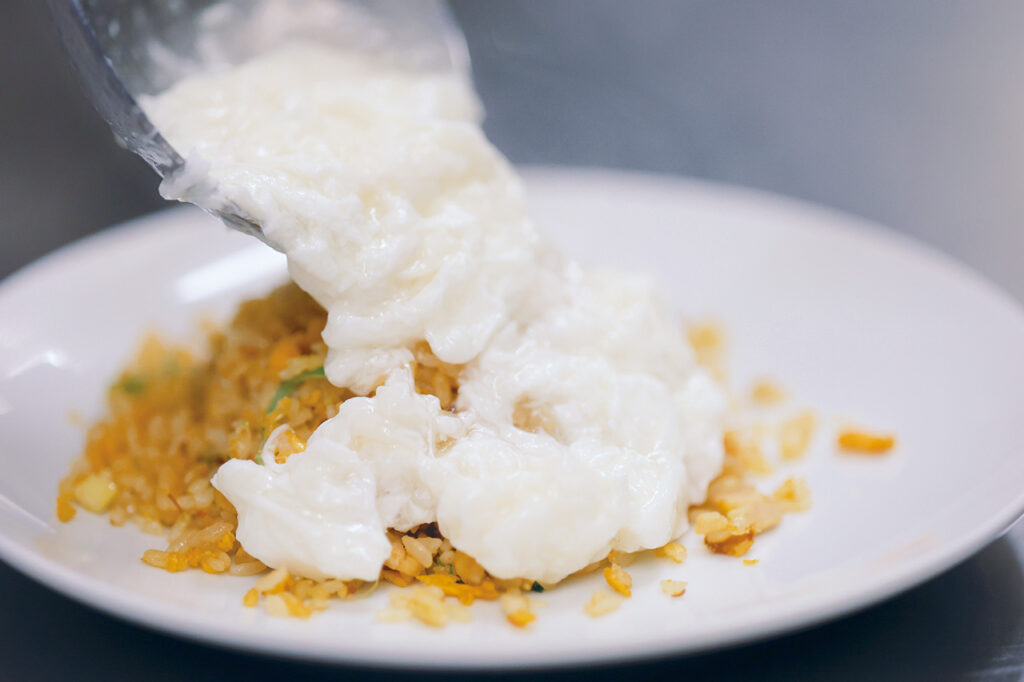
Fried rice with egg white sauce: 4 egg whites with a small amount of evaporated milk added, fluffed up in a lot of oil 1,050 yen

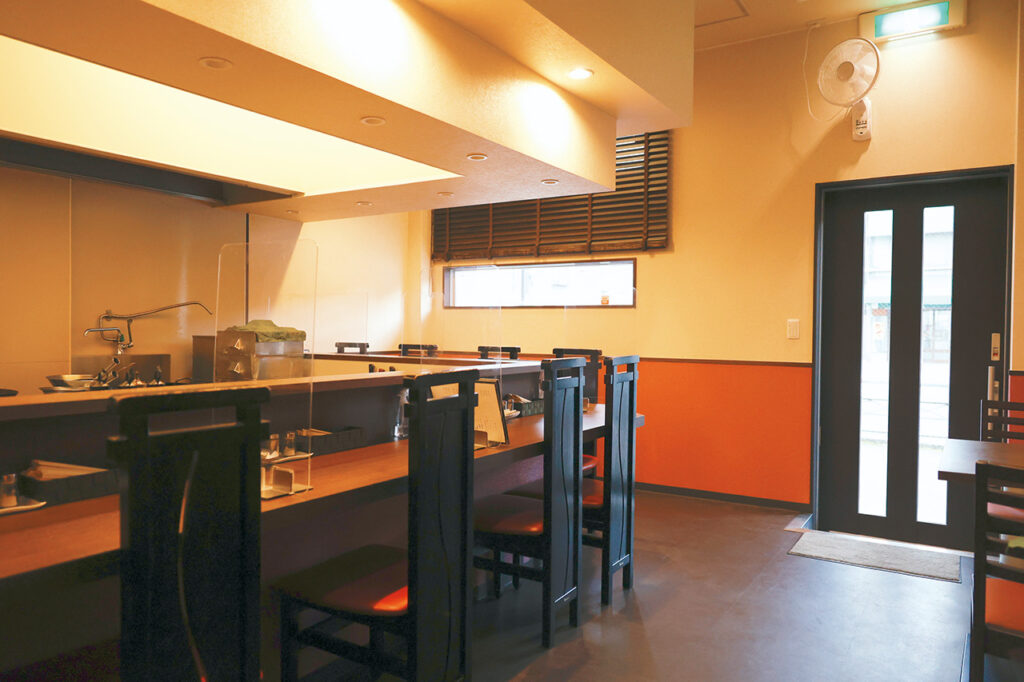

Chef's Special: Wok-fried Monkfish with Shiso Leaves (1,250 yen). Monko squid sliced into florets is lightly salted and accented with chopped shiso leaves, making a perfect match!
Wei Mei Gyoza is a five-minute walk from Karasuma Oike Station, marked by an exotic lantern. This is the former location of Chef Masami Kawakami's Italian restaurant Tanto Tanto, which was opened in 2022 by Wei Yoshiyuki, a Kyoto Chinese cuisine leader who was close friends with Mr. Kawakami, who passed away in December 2020, with the hope of taking over the restaurant as his successor. The restaurant spares no pains in cooking, such as the white soup made from chicken stock, which takes eight hours to complete. There is also a wide variety of small dishes, and you can enjoy authentic Chinese food as much as you like at reasonable prices starting at 390 yen per plate.
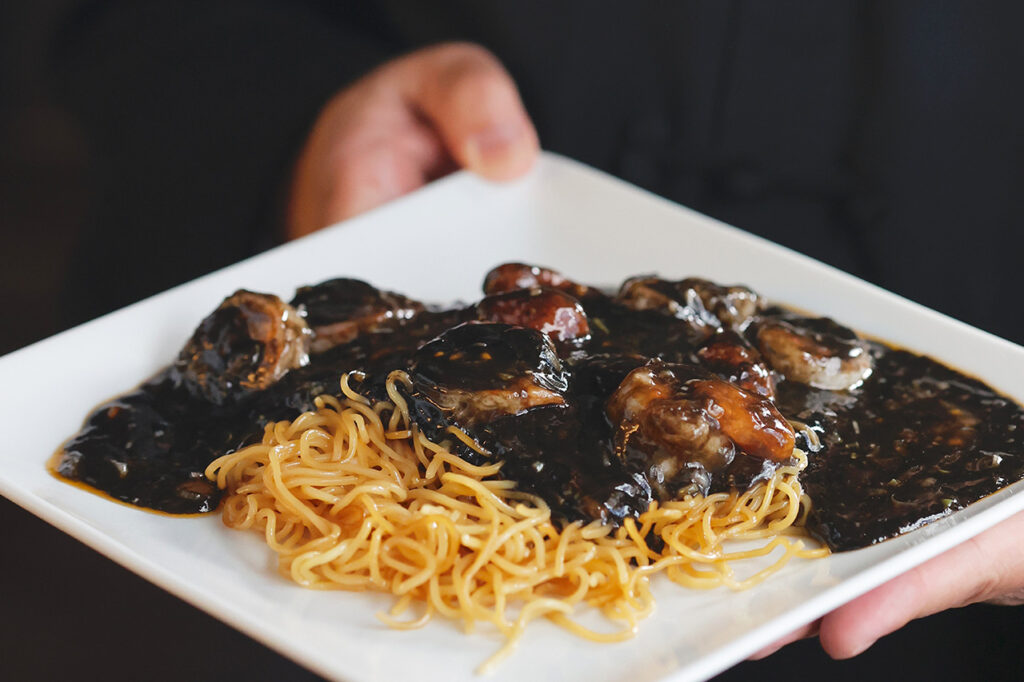
Tanto Otabe Stir-fried Shrimp Chili Noodles with Ikasumi, a sauce that combines the sweet and sour taste of tomatoes and the richness of squid meat with savory noodles and oiled shrimp, 2,200 yen.

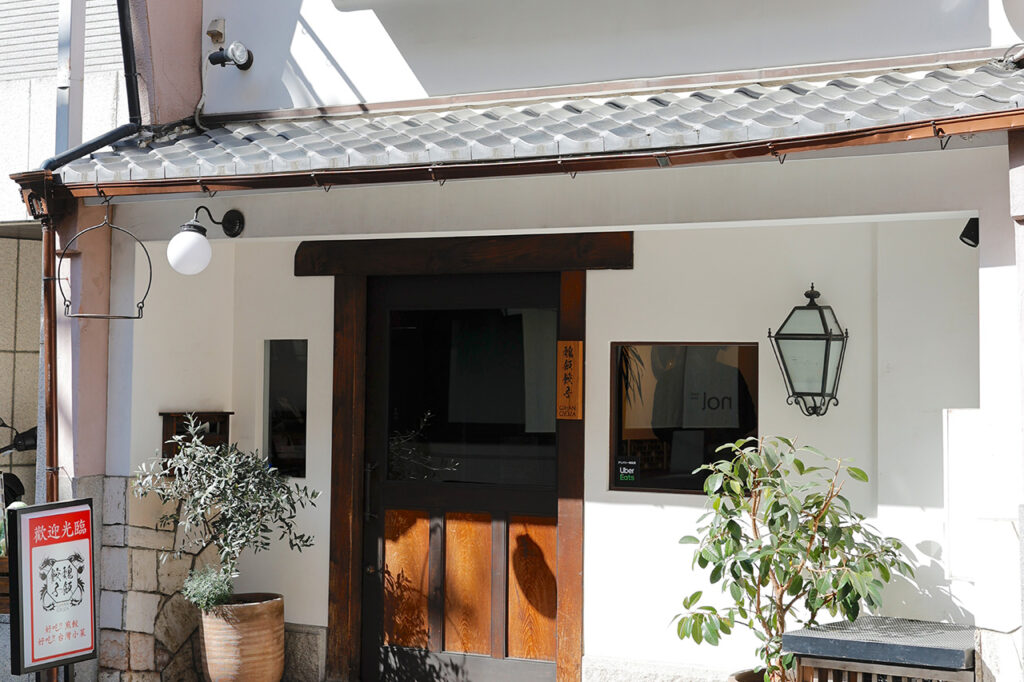

The chef's most popular menu item / lu-lo rice (500 yen (large portion 900 yen) is one of Taiwan's soul food. Cut pork belly is stewed with Taiwanese spices and secret sauce for three hours. Enjoy the flavor-soaked meat with hot rice.
Hosen has been serving the same taste of the famous Chinese restaurant Houmai for 42 years. The most popular menu item is "撈麺" (撈麺). The basic soup is made of chicken stock and Rishiri kelp and has a gentle taste. [This popular restaurant is supported not only by customers who remember the old Houmai, but also by the younger generation.
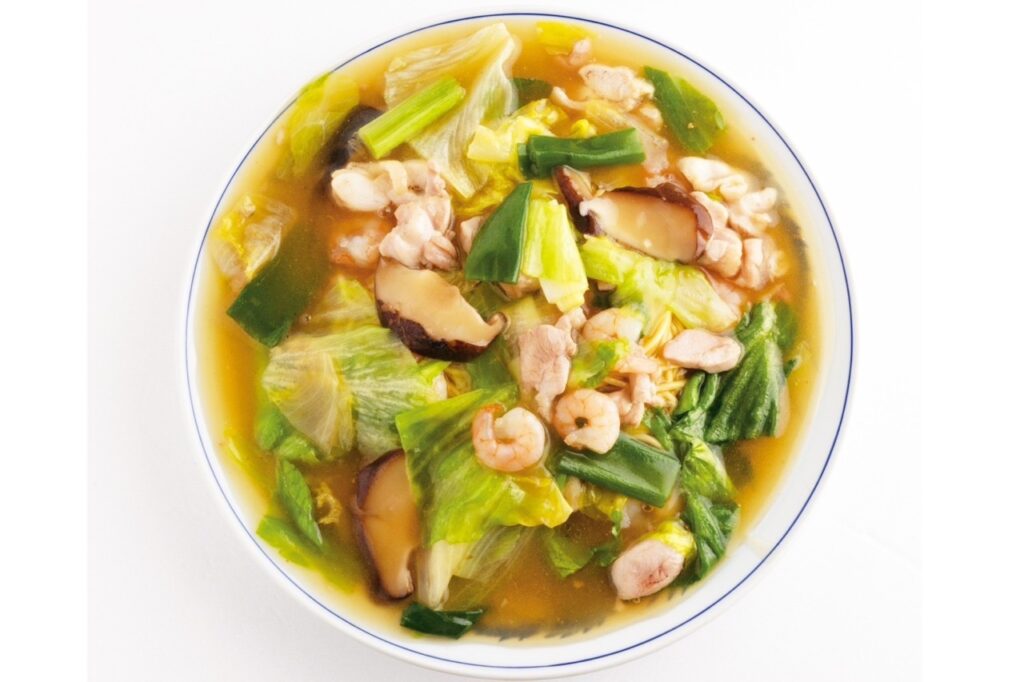
撈麺(Ebi Kashiwa Soba) 990 yen. The noodles are slightly scented with Japanese hot pepper and not too spicy, making them easy to eat. The chewy lettuce adds a pleasant accent.

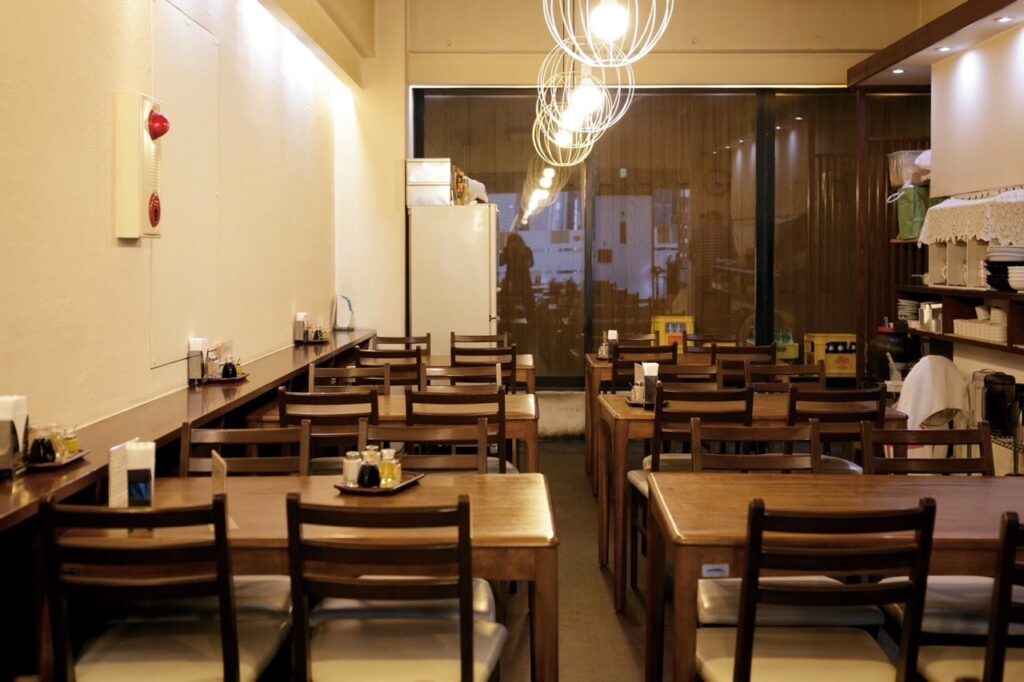

The chef's favorite menu item: Yaki-sai (fried pork dumplings) for 550 yen, which is filled with kowaii (dried mullet roe). Minced pork wrapped in a thin skin is chewy and has a simple taste with little fat.
A Chinese restaurant started by the previous owner, a native of Harbin, China, whose signature dish is sui-gyoza, handmade from the skin based on a local family recipe. It all started when he served sui-gyoza as a way of communicating with his neighbors. Later, the sui-gyoza became so popular that he opened the restaurant with the desire to "spread the authentic taste of Chinese home cooking. We are proud of our sui-gyoza, which do not use garlic in the bean paste in order to bring out the flavor of the ingredients. By adding two kinds of carefully selected pork, Chinese cabbage, chives, and a special broth to the finished product, the juices of the concentrated flavor overflow the moment you bite into the dumpling.
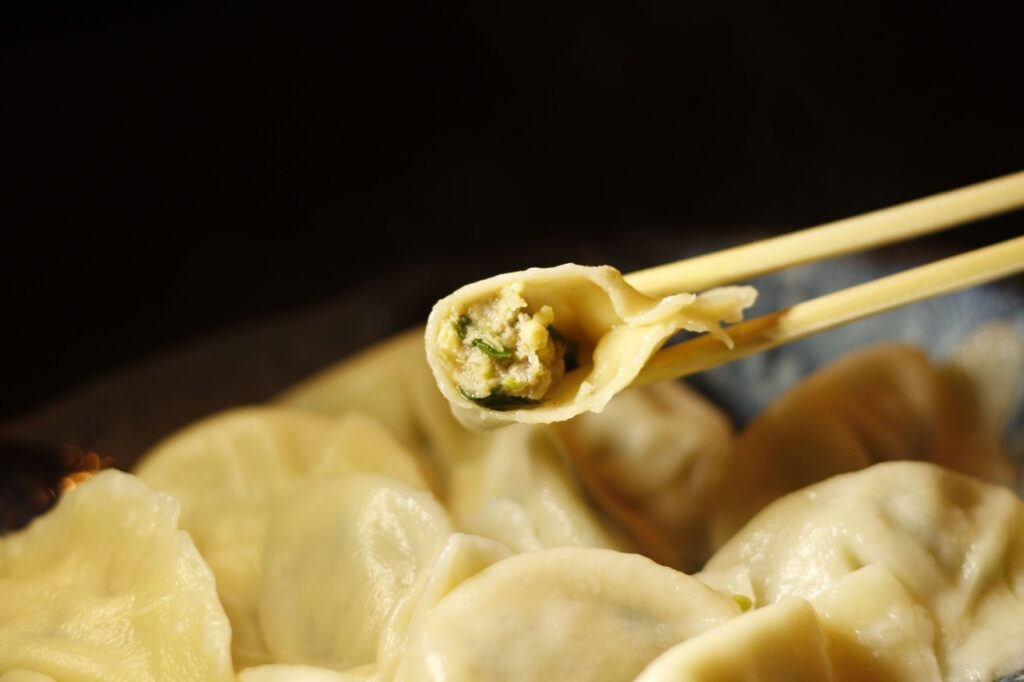
5 pieces of sui-gyoza (dumplings) for 770 yen. The dough is kneaded using a flour and water mixture determined through years of experience, and each dough is carefully stretched by hand to create a chewy, smooth texture.

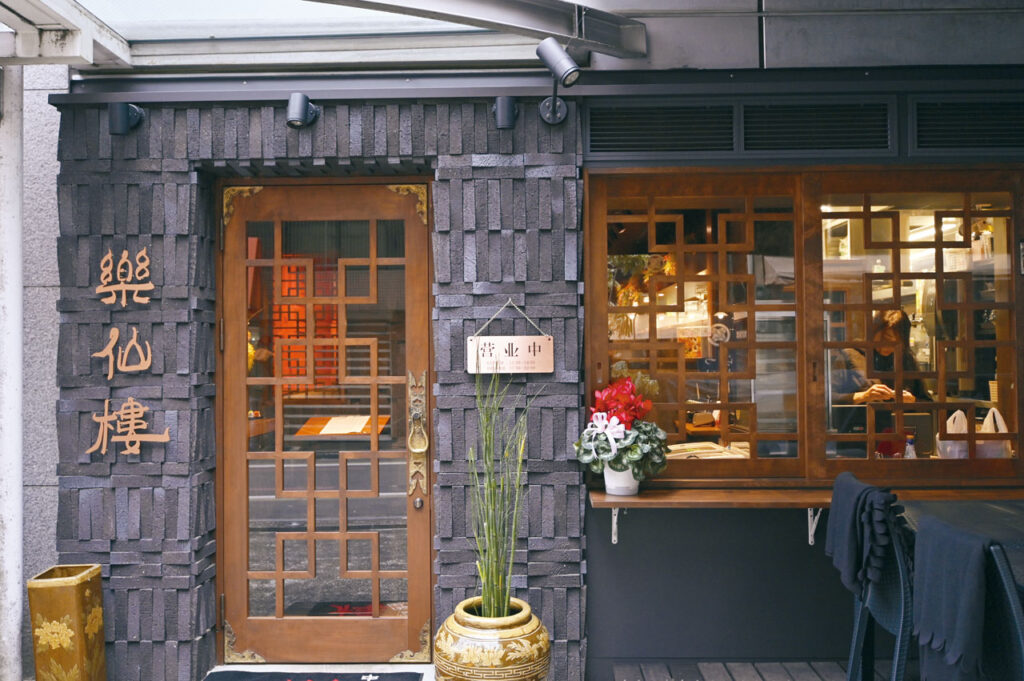

The chef's favorite menu item: Jin Si Pai Gueu (金絲排骨), 3,960 yen. The chef's original dish of braised spare ribs surrounded by crispy fried shredded potatoes. The robust flavor goes well with beer and rice. It has also been introduced on YouTube by a celebrity as "an excellent menu item at my favorite Chinese restaurant.
Marushin Restaurant was established in 1977 near the Higashiyama Sanjo intersection. The second-generation owner, Ryushiro Maekawa, has inherited the taste and catchphrase "Marushin that never sleeps" since its establishment, and the restaurant continues to be popular and enthusiastically supported by fans from all over Japan. The restaurant has been featured in numerous media articles, and is so crowded that there is never a day when there is not a line of people waiting in line, both day and night. The restaurant is famous for its Tianjin rice and gyoza (Chinese dumplings), which are "just like a drink," but it also offers a wide variety of dishes, with a lineup of about 80 varieties. The restaurant is also adjacent to a direct-sale store selling fresh gyoza, allowing customers to enjoy the taste of gyoza at home. Gyoza can also be shipped nationwide.
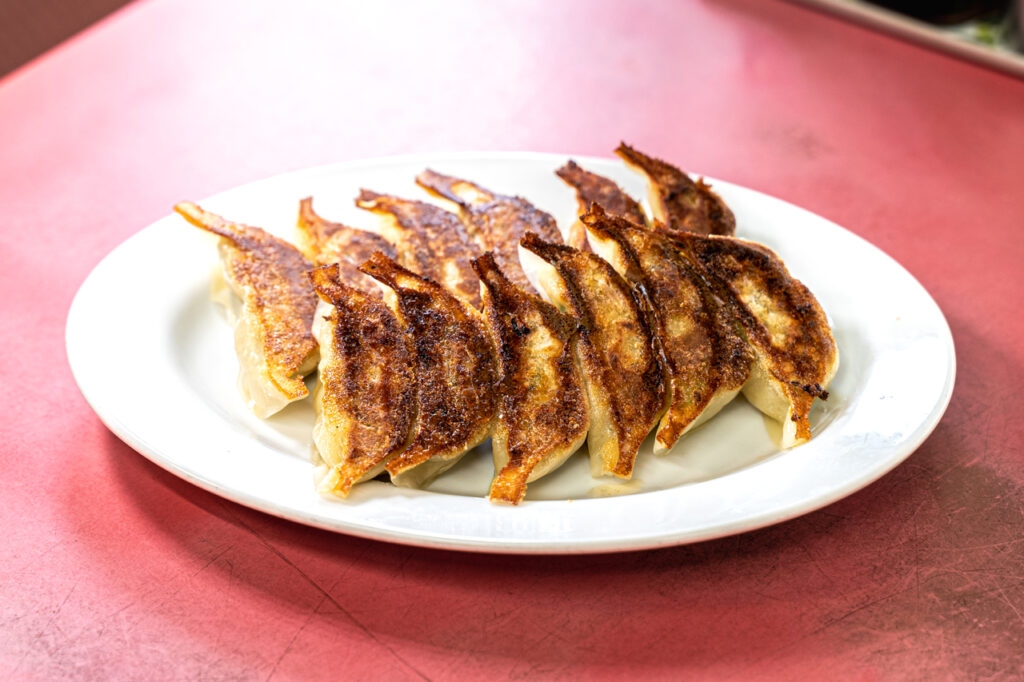
Marushin Restaurant Gyoza (6 pieces) 380 yen and Aged Pork Gyoza (6 pieces) 470 yen, which are packed with the original flavor of meat and vegetables ground on the same day.

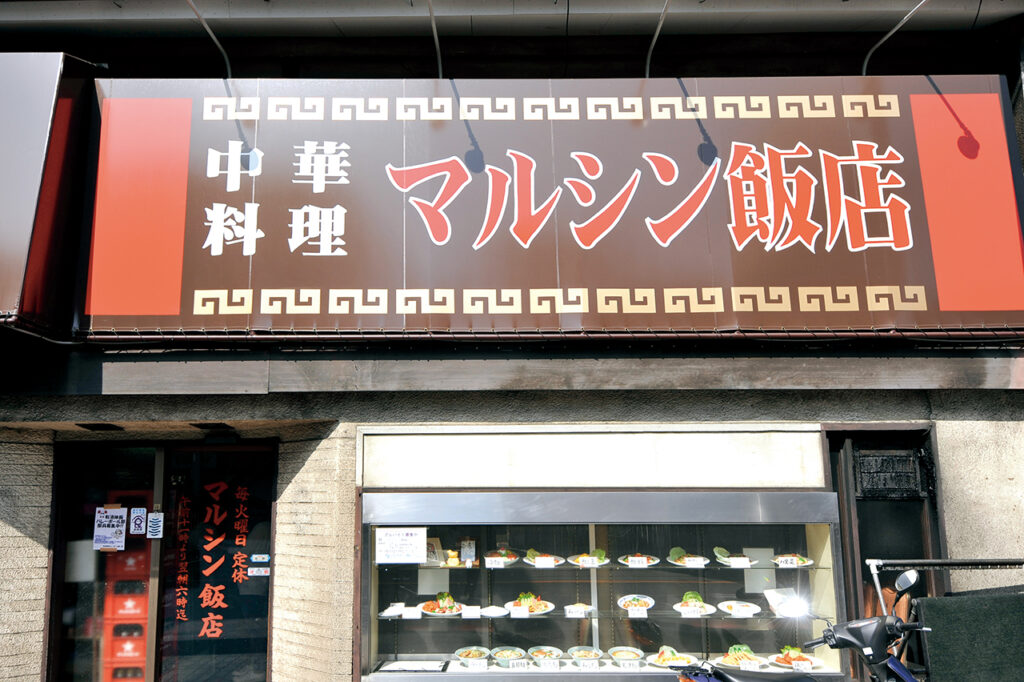

Chef's Favorite Menu / Pork Tempura: 1080 yen. The pork seasoned before frying and the sweetness of the egg floating in the crispy batter are the best match. Crispy on the outside and juicy on the inside, this dish goes great with beer and rice!
[Misono no Hashi Sakai was established in 1939 as an independent restaurant from Chuka no Sakai Honten (Chinese Restaurant Sakai). The popular menu item is cold noodles, which is often featured in the media. Cold noodles are usually associated with summer, but here they are served all year round. The sesame sauce, which has not changed since the establishment of the restaurant, is made by blending soy sauce and various other seasonings with a base of chicken stock, and the sauce, which takes two to three days to prepare, has a mild and rich flavor. This popular restaurant attracts not only locals, but also celebrities and fans from other prefectures.
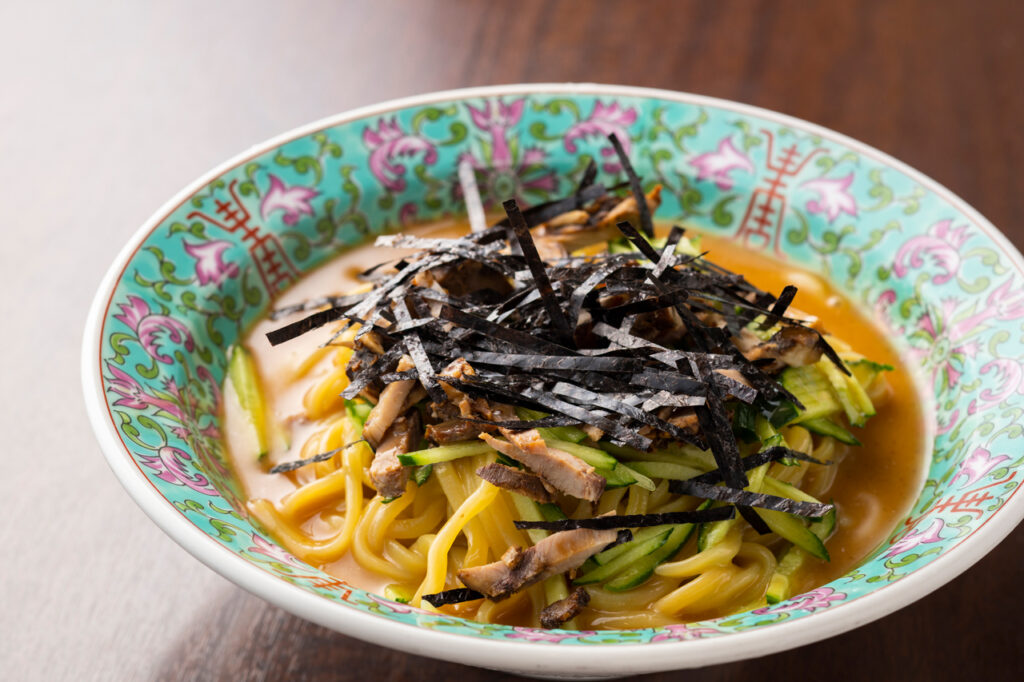
Roasted pork cold noodle 870 yen. The sauce has just the right amount of sourness and goes great with the chewy, thick noodles.

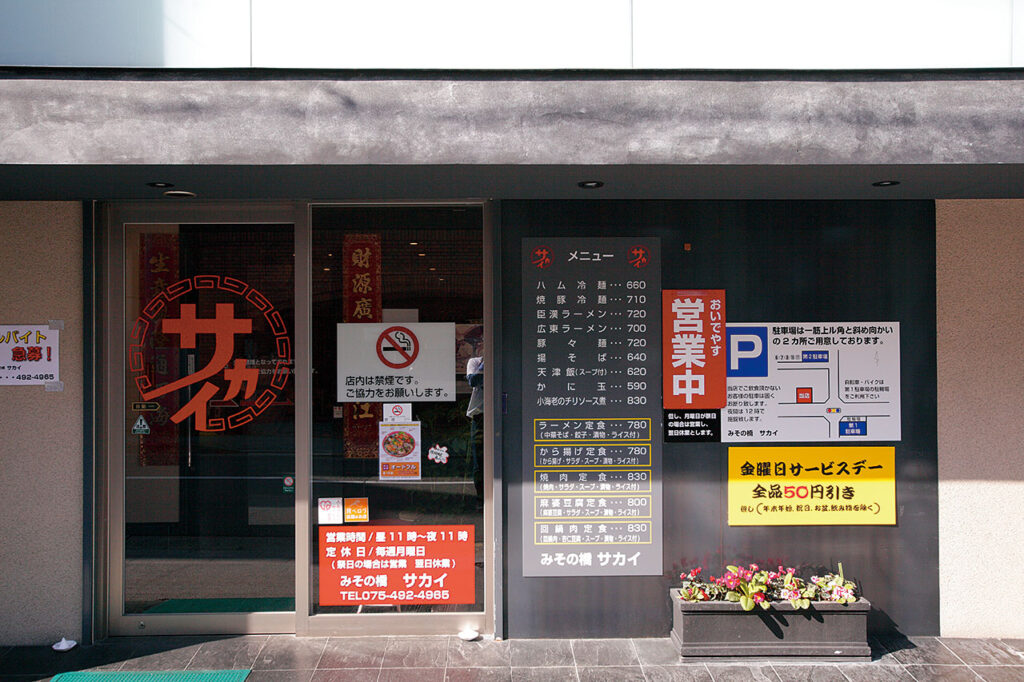

Chef's Favorite Menu / Tenshinhan 800 yen with soup. Instead of the familiar sweet-and-sour or soy-sauce-flavored bean paste, it is made with a thick white soup that combines perfectly with the fluffy egg. It has been featured in the media as "evolutionary Tenshindon with red bean paste" and has many fans.
The nostalgic storefront, marked by the white curtain, and the carefully selected menu make this gyoza diner [Ikawa Gyoza Nakajima] a favorite among fans. The menu includes a wide variety of fried gyoza with spicy mayonnaise and boiled gyoza. The cups with celebrity names on them have become a hot topic on social networking sites. The owner, a sauna lover, invented the "gyoza x sauna x beer" menu, allowing customers to enjoy the sauna on the rooftop and then enjoy gyoza and beer on the first floor. Check the website if you are interested.
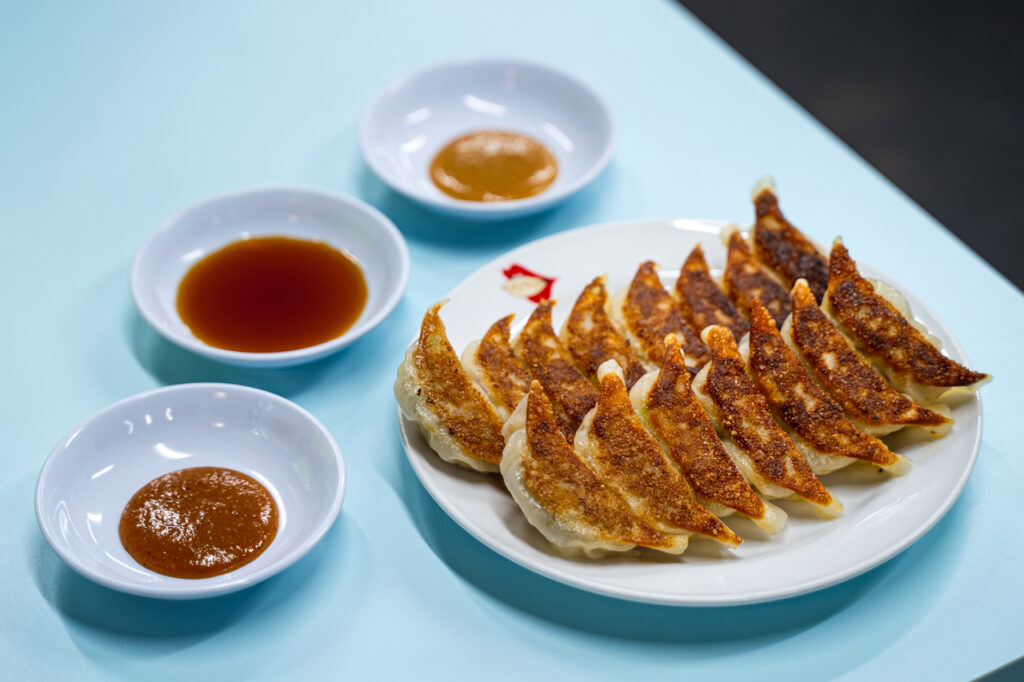
Five gyoza deep-fried dumplings, 400 yen. The flavor of Kyoto poke, Aomori garlic, and the sweetness of domestic vegetables are a perfect match. The crispy thin skin is light on top of plenty of vegetables, so you won't get sick to your stomach even if you eat a lot. Photo shows 3 servings

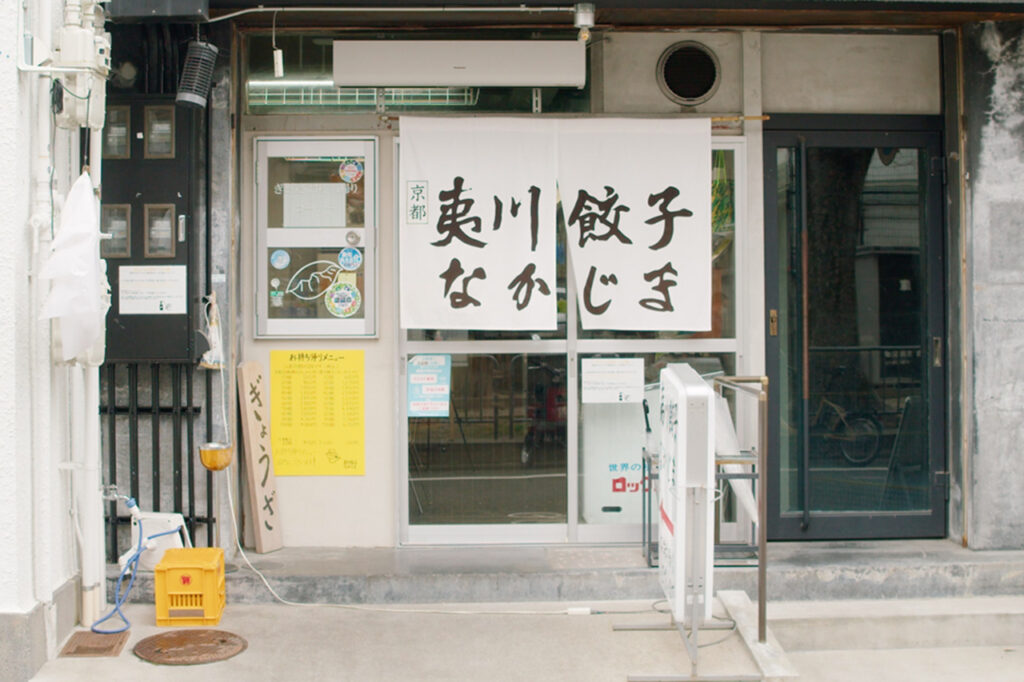

Chef's recommended menu item: Egg char siu pork, 690 yen. Tender chashu pork cooked at low temperature with hot spring egg and special sauce.
The second branch of the popular Kujo restaurant "Lao Shokai", Lao Shokai Sanjo Branch is located in Kyoto's Sanjo-kai shopping district. The restaurant offers authentic Chinese cuisine prepared by Chef Fumi, a native of Northeast China who has experience cooking at a local hotel. The restaurant's atmosphere is like a local diner, and many Chinese living in Japan frequent the restaurant as it offers a wide variety of dishes from all over China. The restaurant offers set menus not only for lunch but also for dinner, and the generous portions at reasonable prices are sure to satisfy.
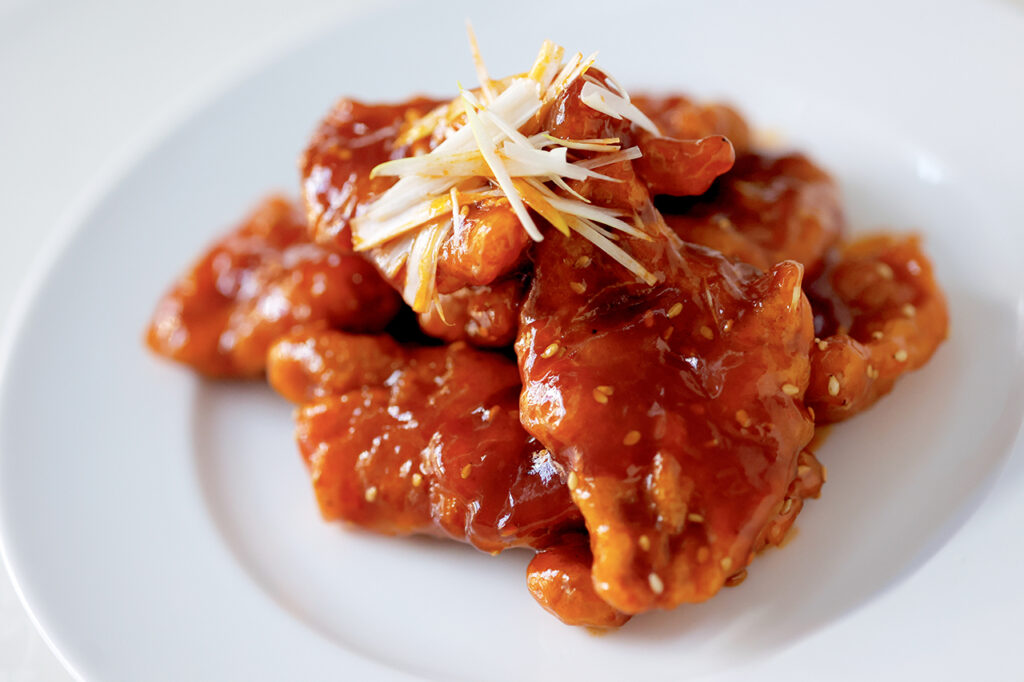
Gohbaolo 1080 yen is one of the Chinese and Northeastern cuisines, which consists of tempura pork fillet served in a ketchup-based sweet and sour sauce. Popular with men and women of all ages.

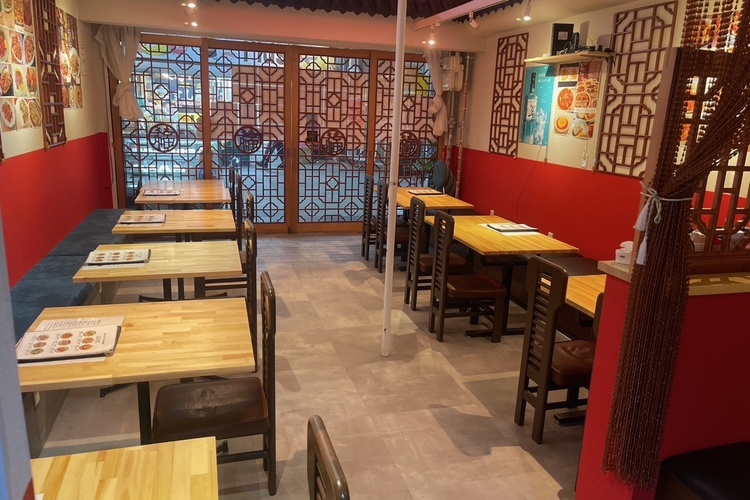

Chef's Recommended Menu / Hot pot, which is very popular in winter, is 3,300 yen per person. You can choose from two types of hot pot: hot pot with hot sauce and hot pot with herbal white water, both of which are all-you-can-eat!
Hohan Hohan Saga Arashiyama Branch] is popular among local families and tourists. The restaurant is particular about its ingredients, using carefully selected ingredients for all dishes, such as fresh Kyoto vegetables picked in the morning and seafood delivered from the market every day. In addition to standard Chinese dishes, the menu offers a wide variety of creative Chinese dishes and authentic a la carte dishes unique to "Hoan Hoan Saga Arashiyama Branch". Rice oil is used for the dishes, giving them a gentle flavor.
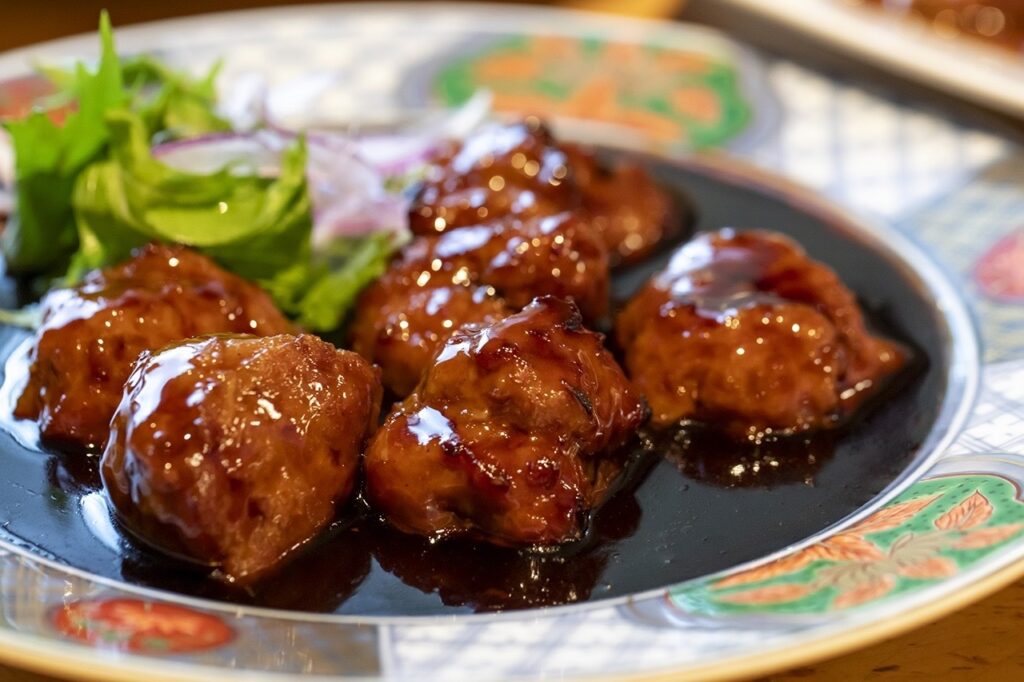
Meatballs in black vinegar sauce with deep Zhenjiang Shang vinegar and refreshing lemon acidity ¥780

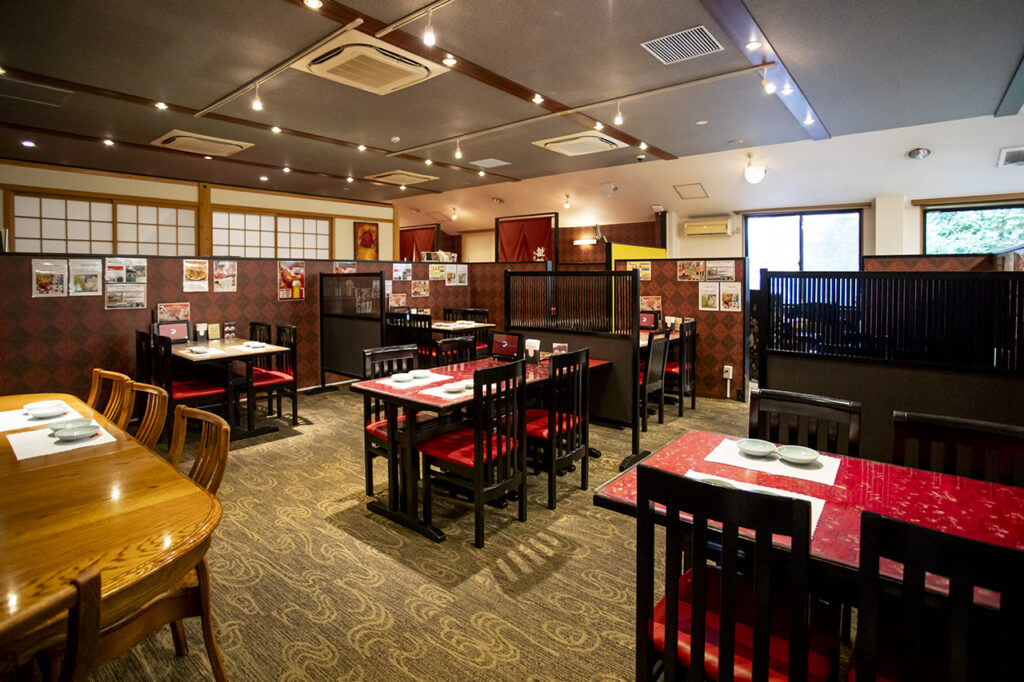

Chef's Special: Chicken and pork bone broth with special soy milk from Kyoto's long-established tofu store. The Saikyo miso-based seasoning is rich but has a light aftertaste. A bowl of noodles condensed with the delicacies of Kyoto.
The yellow and red signboard of Dongdaichi Street's Dongbei House is eye-catching, and the restaurant has the lively atmosphere of a local diner, run by husband-and-wife team Changsheng and Li. Changsheng, the husband, has been working in the kitchen for about 15 years, honing his skills at a hotel in China, and is certified as a special chef, the highest level of Chinese cuisine. In addition to dishes from the northeastern region of China, where spices are used and the flavors of the ingredients are brought out, the restaurant offers Chinese cuisine from a wide range of regions. All dishes are reasonably priced and generous in portions. His wife, Li, who greets customers with a friendly smile, also has many fans.
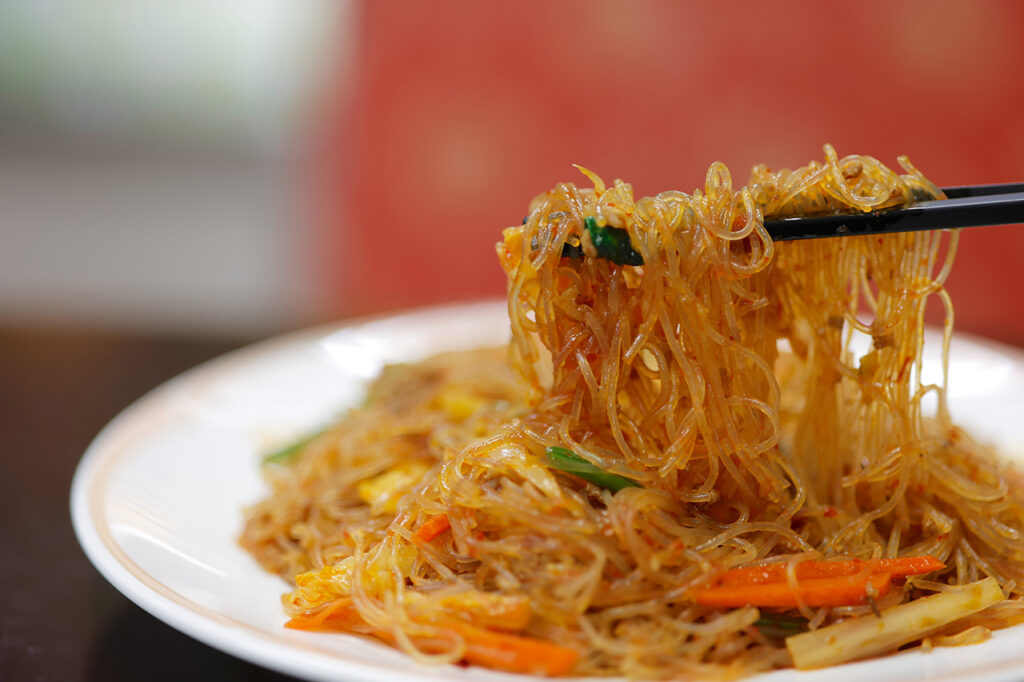
Mapo Harusame (bean-paste vermicelli) 935 yen. The spicy flavor of vermicelli mixed with minced meat, vegetables, sansho (Japanese pepper), and chili peppers makes it a great dish to go with rice.

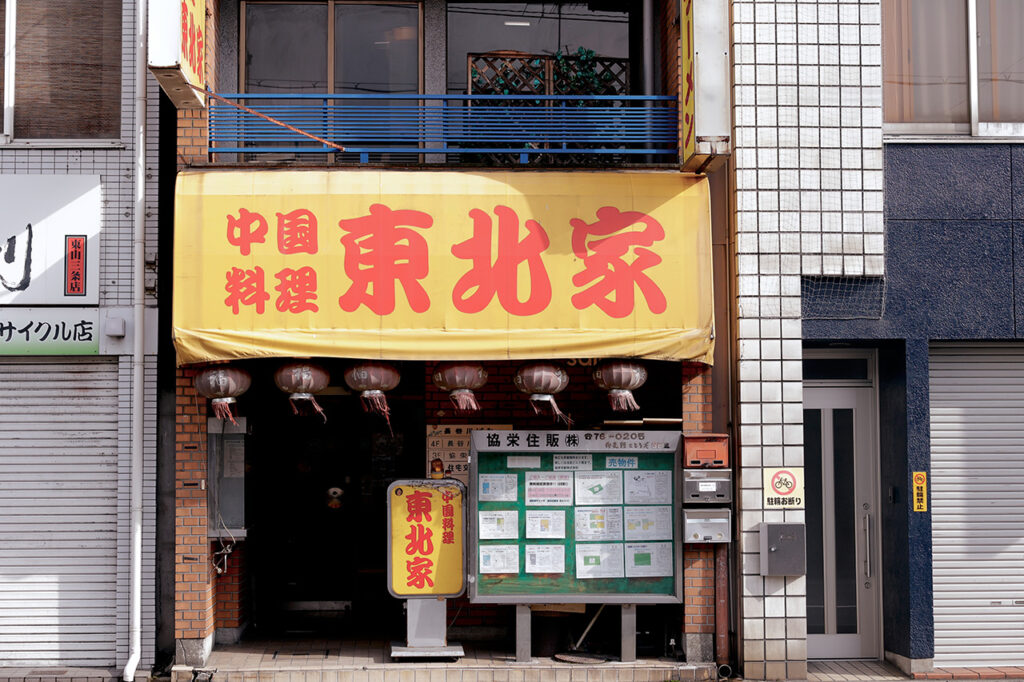

Hong Kong Yumcha Hoshi-Gai Kawaramachi Sanjo Branch], where you can taste authentic Hong Kong dim sum, insists on handmade, not frozen, dim sum. The chef is Mr. He Yingjing, a native of Hong Kong with over 40 years of experience as a dim sum chef in Hong Kong, Canada, and other parts of the world. On the first floor, you can watch the dim sum being prepared. Enjoy a heartwarming moment with our handmade dim sum, which is our pride and joy.
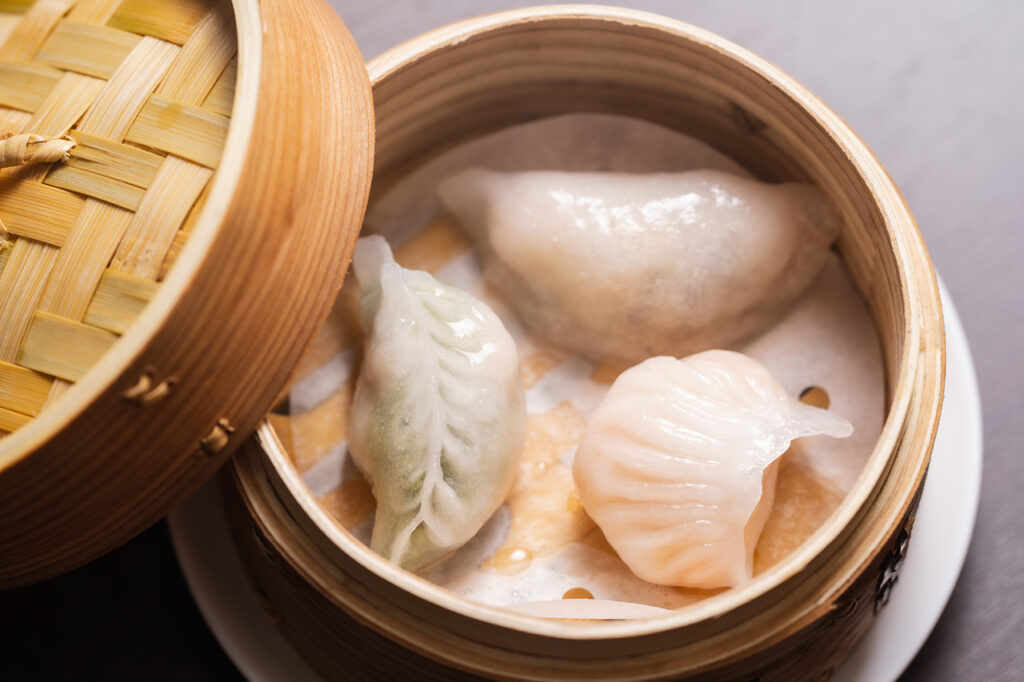
Three kinds of steamed gyoza with irresistible chewy texture for 820 yen. Consists of shrimp, dried scallops and spinach, and steamed mushroom and shrimp dumplings.

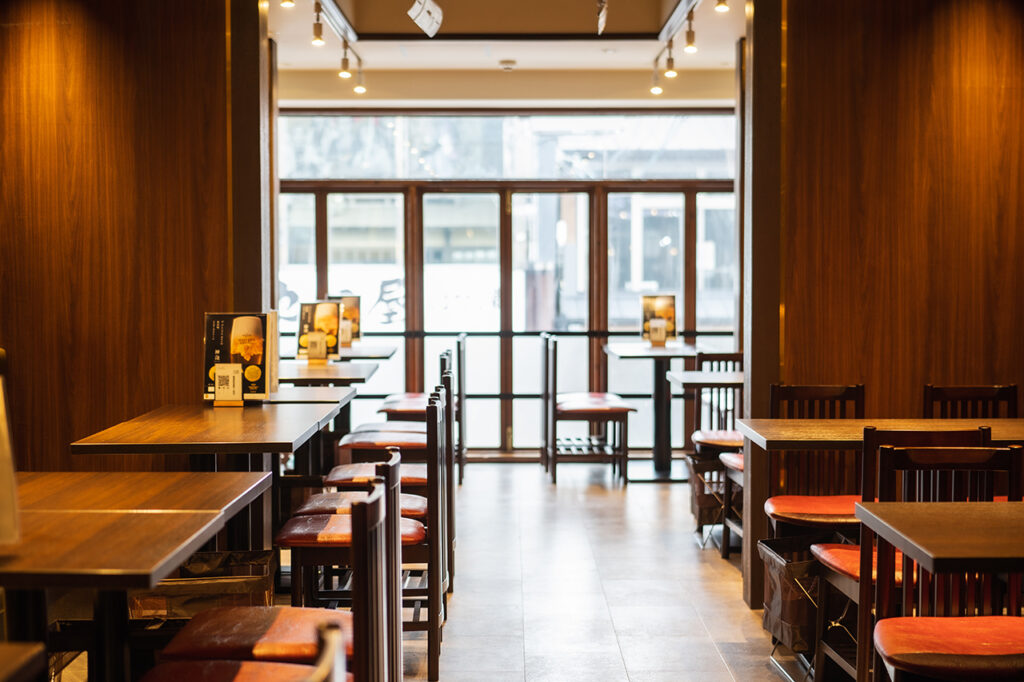

The chef's favorite menu item, a three-piece daikon cake for 690 yen, is so soft and chewy that it melts in the mouth. The dough, which contains shredded radish, dried shrimp and Hong Kong sausage, is steamed before baking.
Authentic Cantonese cuisine is served at Shihtouka, located along Shimochojamachi Street on the north side of the Kyoto Prefectural Government Office. With its calm and stylish appearance, it is a popular restaurant with a long line of customers even on weekdays during peak hours. Although it is an authentic Chinese restaurant, children's chairs and tableware are available, making it a great place to visit with children without hesitation. Lunch includes a choice of five main dishes, such as chili shrimp, sweet-and-sour pork, or fried chicken with condiment sauce, as well as dim sum and apricot bean curd for 1,600 yen. In the evening, the restaurant focuses on courses, offering four types of courses starting at 4,000 yen. Reservations are recommended as the restaurant is very popular.
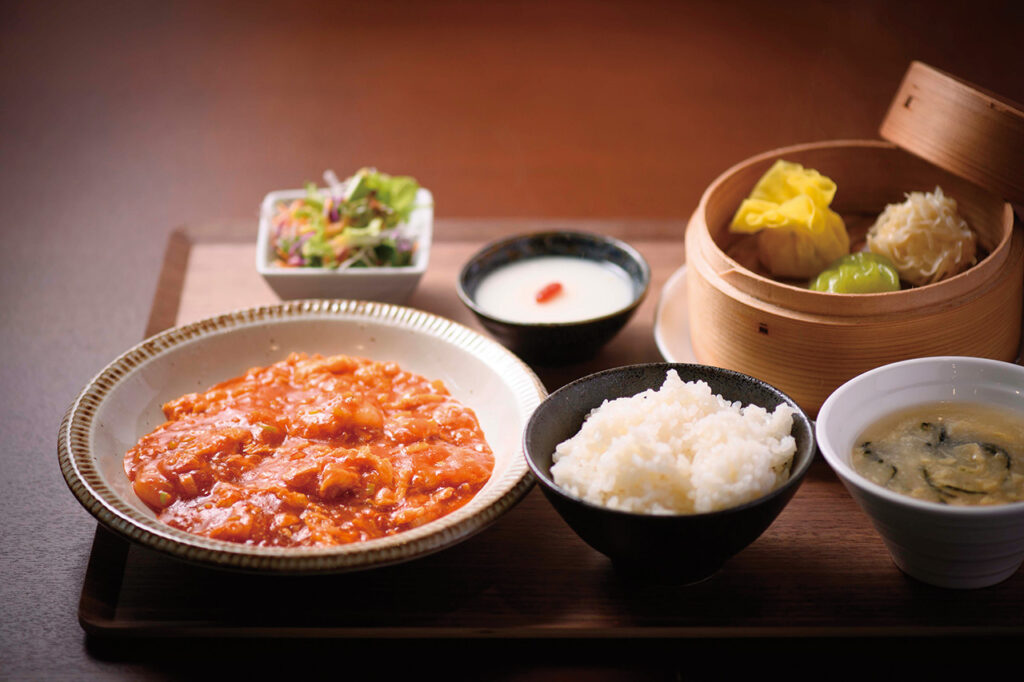
The photo shows an example of the lunch menu. The spiciness of the chili sauce is made mild with eggs, and the shrimp chili goes perfectly with white rice. Shrimp and egg with chili sauce set 1,600 yen

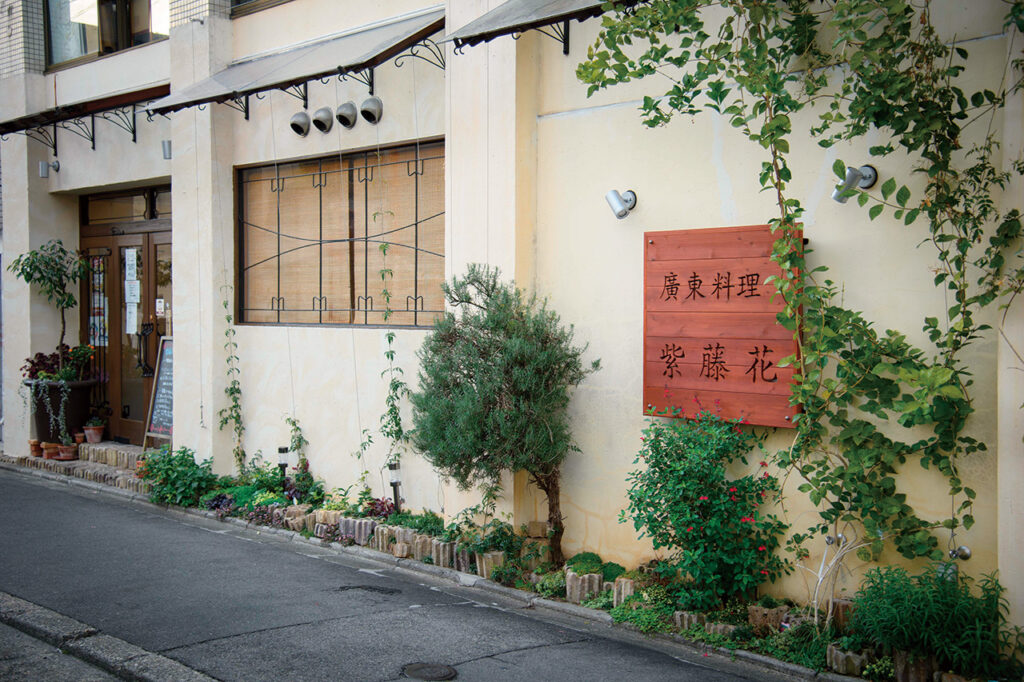

Chef Profile / Owner Chef Hideo Kato. Born in Chiba Prefecture. He worked as a sous chef at the Brighton Hotel in Urayasu, and then as a chef in Kyoto. After that, he gained experience at Ichinofunairi, a creative Chinese restaurant, and became independent in 2020.
Located near Karasuma Subway Station, Zenjo Hanpochi Kyoto is marked by a stately building that was renovated from a former kimono store and residence. The name "Zenjo Hanpochi Kyoto" was derived from the similarities between the historical cityscapes of Kyoto and Beijing, and was inspired by the kitchens of Beijing, where Chinese court cooking was prevalent. The interior of the restaurant is a Kyoto-style machiya (townhouse), where you can enjoy Chinese court cuisine combined with the traditional techniques of Kyoto cuisine. The restaurant offers a wide range of dishes, from small dishes that are easy to try to menus that use premium ingredients, as well as attractive seasonal specials such as cool noodles in summer and hot pot in winter. Enjoy not only the food but also the atmosphere of the courtyard and the building. The restaurant can be used for a wide range of occasions, from family dining to business entertainment.
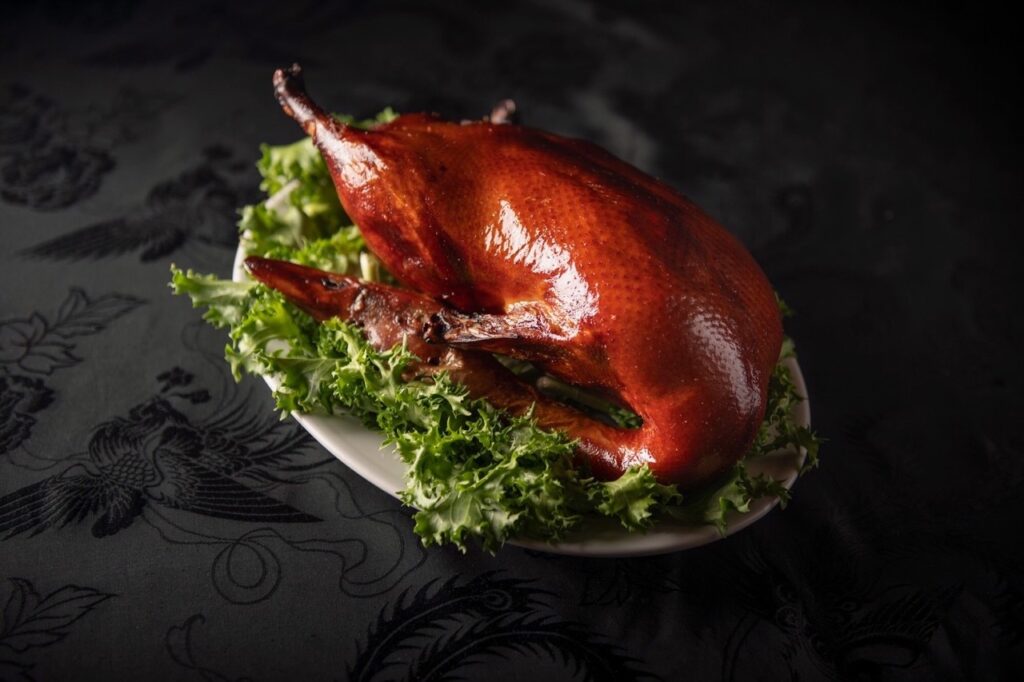
The photo shows an example of the 11,000 yen Peking Duck Set, which uses a whole duck. Served with Peking duck, duck soup, and stir-fried dish.

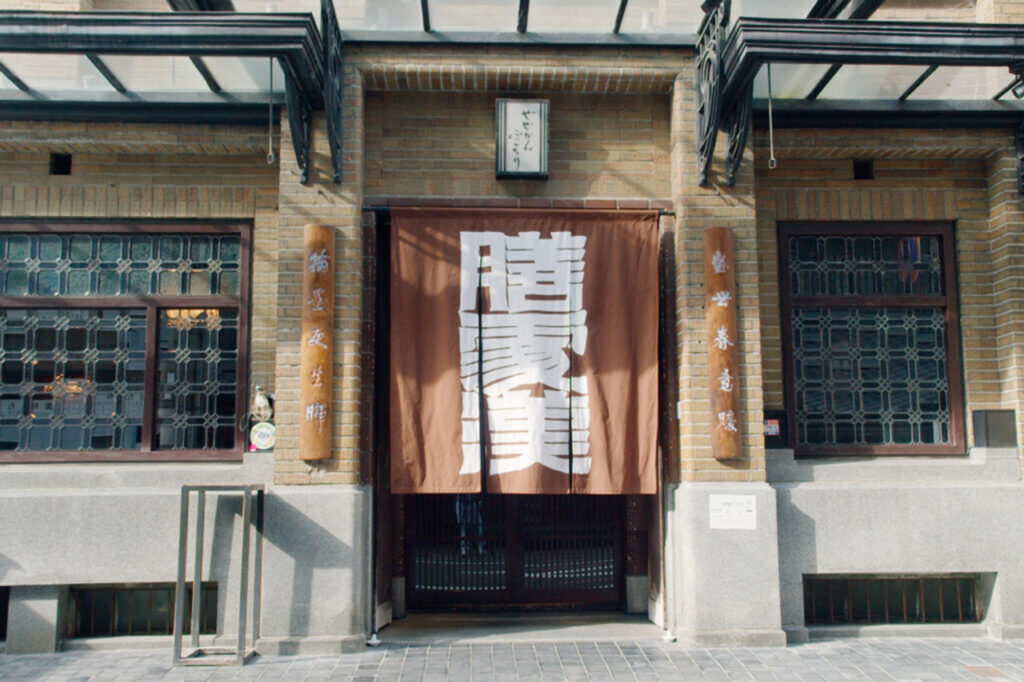

⚫︎ Chef's Special Menu: Shark's fin rice in earthenware pot (extra high (tail fins): 8,400 yen, high (pectoral fins): 3,500 yen, low (minced): 2,400 yen). Top (pectoral fins): 3,500 yen, Normal (minced): 2,400 yen). A special dish of hot earthenware rice topped with a thick white soy sauce-flavored bean paste.
The spanish-baroque Western-style building [Toka Naikan] stands out on the busy Shijo-Ohashi Bridge. The building was built in 1926 by the architect Vories, who left it as the only restaurant building in his lifetime. Inside the building, a manual elevator, said to be the oldest in Japan, is still in use. The cuisine is based on Shandong cuisine, which emphasizes dried ingredients, delicacies, and ingredients containing many nutrients, combined with Peking cuisine cooking methods. In summer, the restaurant also offers Kamo River Noryo-doko, a traditional Japanese flooring deck, and a rooftop beer garden overlooking the Kitayama and Higashiyama mountains of Kyoto. Enjoy traditional authentic Beijing cuisine in a retro atmosphere.
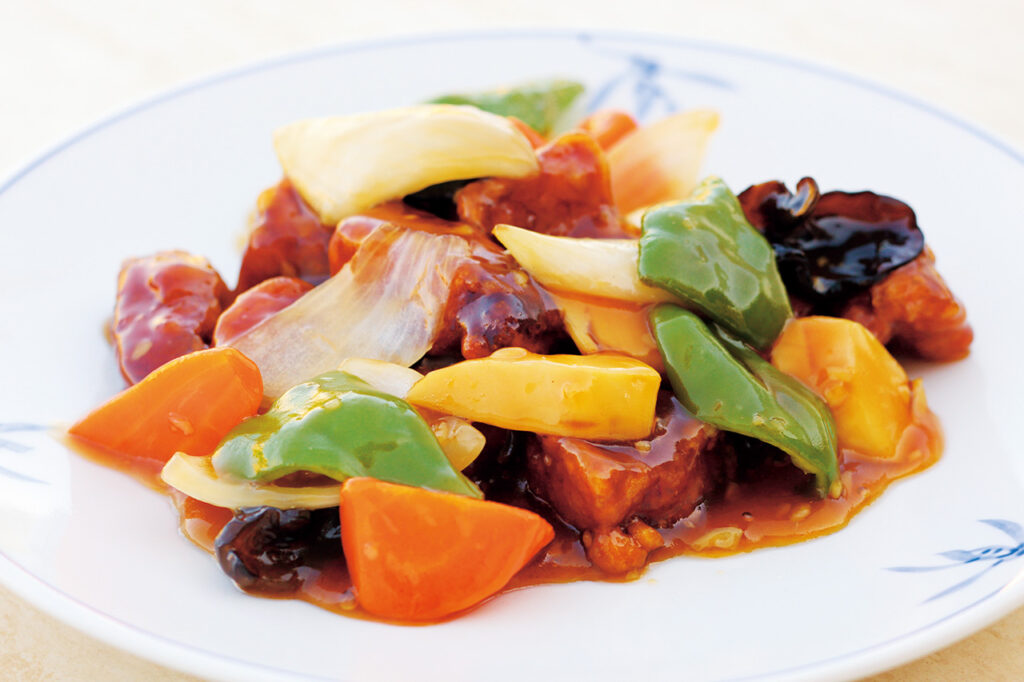
Popular menu item: sweet and sour sweet-and-sour sweet-and-sour pork for 2,000 yen

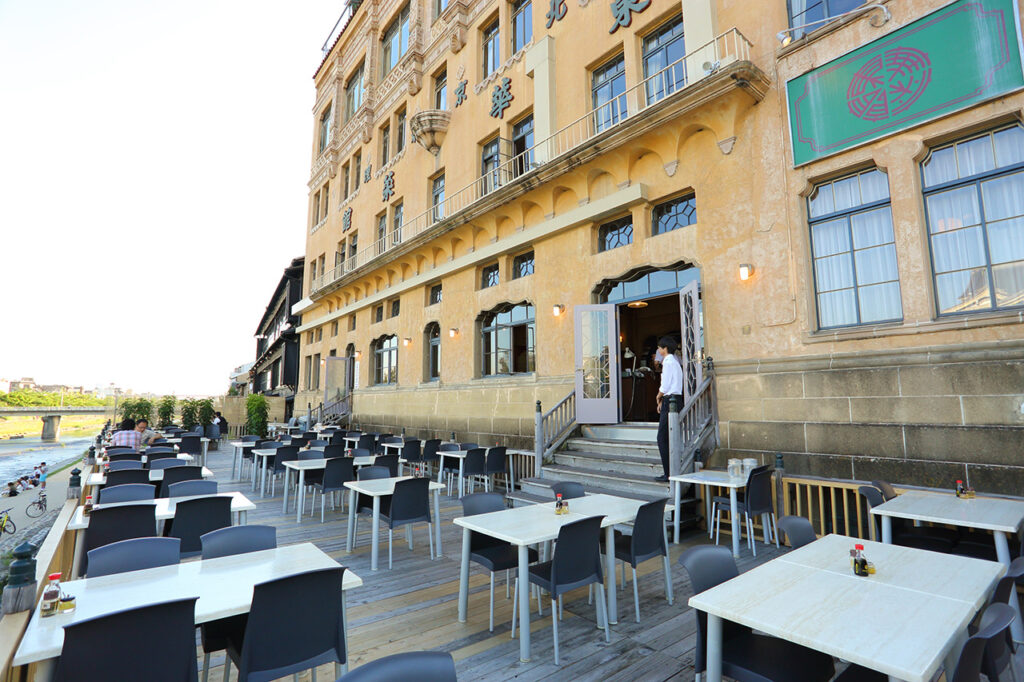

Chef Profile: Yu Shude. [He has been working at Dong Hwa Catering for 24 years. He values the sincerity of his cooking and his guests every day, and continues to uphold the traditions of his predecessors.
Facing Ichinofunairi, a historic site along the Takase River, is Ichinofunairi, a charming restaurant in a renovated machiya, a former tea ceremony house. Here, you can enjoy rich and elegant Kyoto-style creative Chinese cuisine, which makes use of the flavor of not only Japanese but also French soup stock. Based on the concept of "medicine and food as the source of all life," which is to prevent illness through food, the restaurant uses only the best ingredients, and its health-friendly cuisine, which uses seasonal, pesticide-free vegetables delivered from contracted farmers, is a hit with visitors. The relaxing space, cuisine, and courteous hospitality of the staff are sure to make your time here a satisfying one.
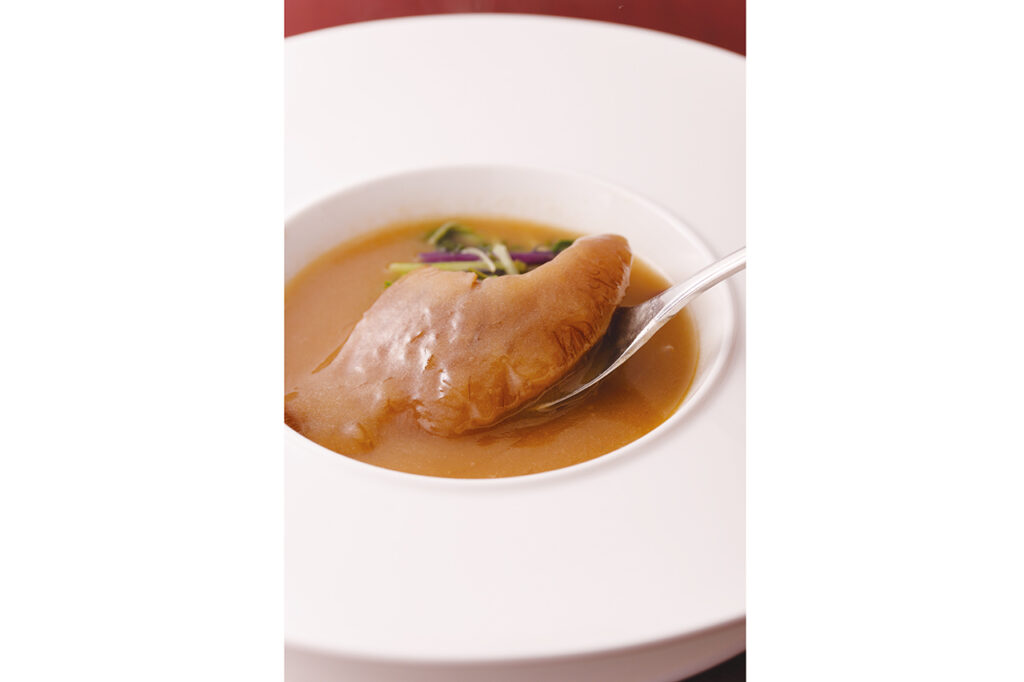
The photo shows an example of a 14,850 yen (not including tax) course meal. Extra-large shark's fin in shoyu sauce. The soup is made by simmering Jinhua ham, duck, hen, pig's feet, and other ingredients for eight hours.

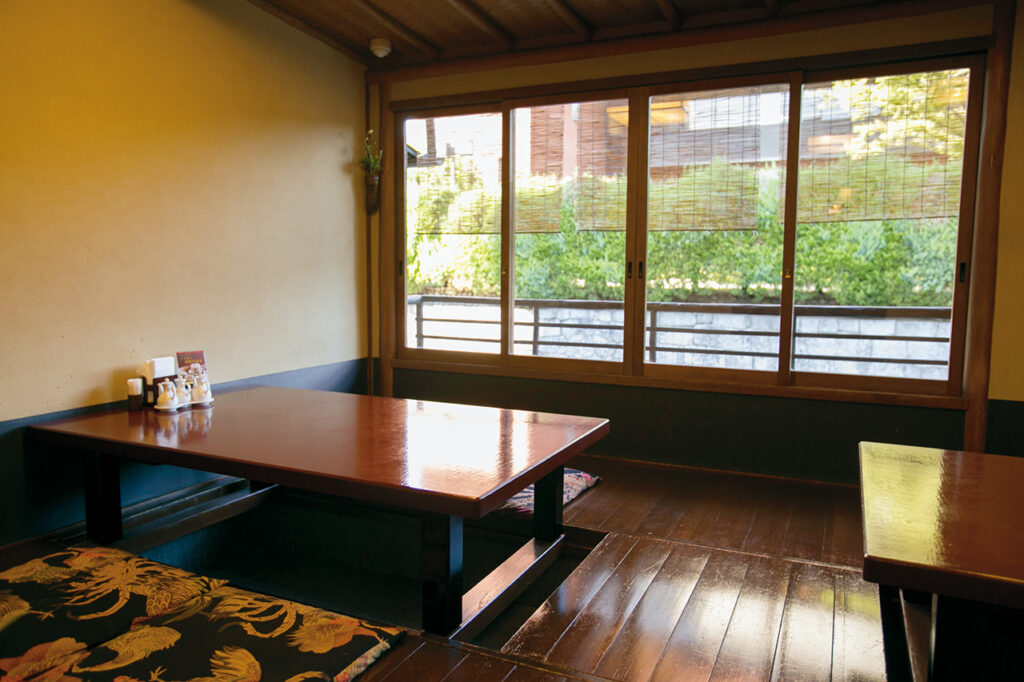

⚫︎ Chef Profile / Owner Chef Wei Xiyi. Grew up in Yokohama Chinatown, held a knife at his family's Hunan restaurant [Ming掦] since the age of 11. 2018, acquired the highest qualification in Chinese cuisine, the Chinese government-approved high-level cooking license.
[Kyo, Seika is located along the Biwako Sosui Canal near Heian Shrine. It is listed in the Michelin Guide and has many fans among gourmets. The restaurant offers a relaxed atmosphere with stylish concrete walls and a warm wooden counter. The restaurant offers only counter seating so that guests can directly feel the restaurant's response. The course consists of about 10 dishes from appetizers to desserts. Enjoy the delicate and beautiful dishes that reflect the chef's insatiable pursuit, such as recreating centuries-old Chinese recipes using modern ingredients.
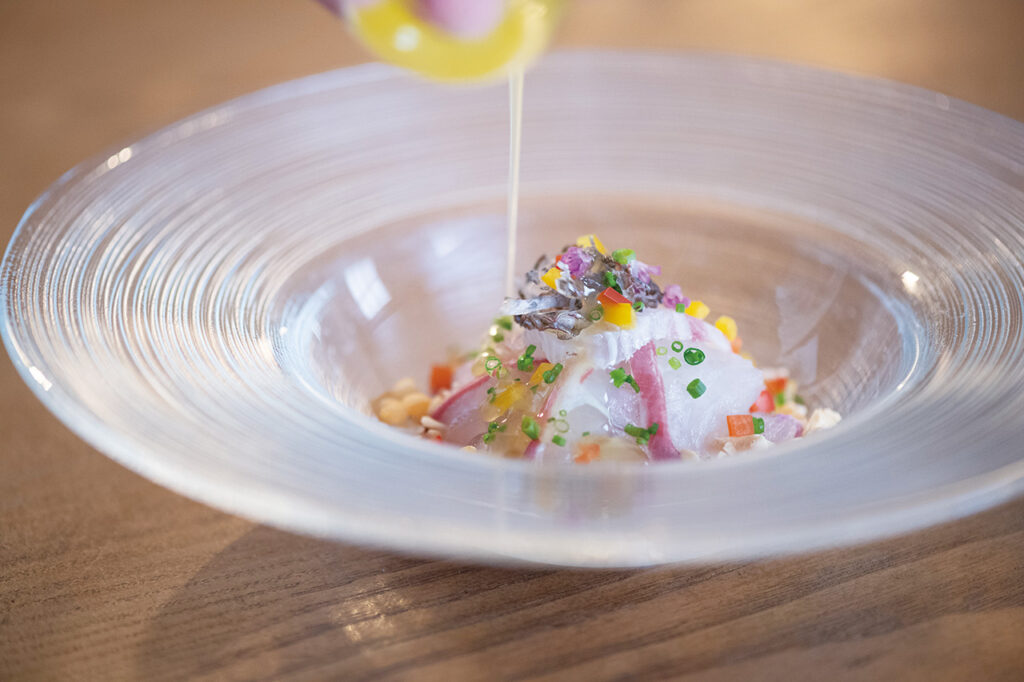
All dishes are examples of seasonal dishes priced at 24,200 yen (not including tax). Shizuka Gyosei is a refreshing dish of sea bream from Akashi, sprinkled with nuts and other ingredients and drizzled with olive oil.

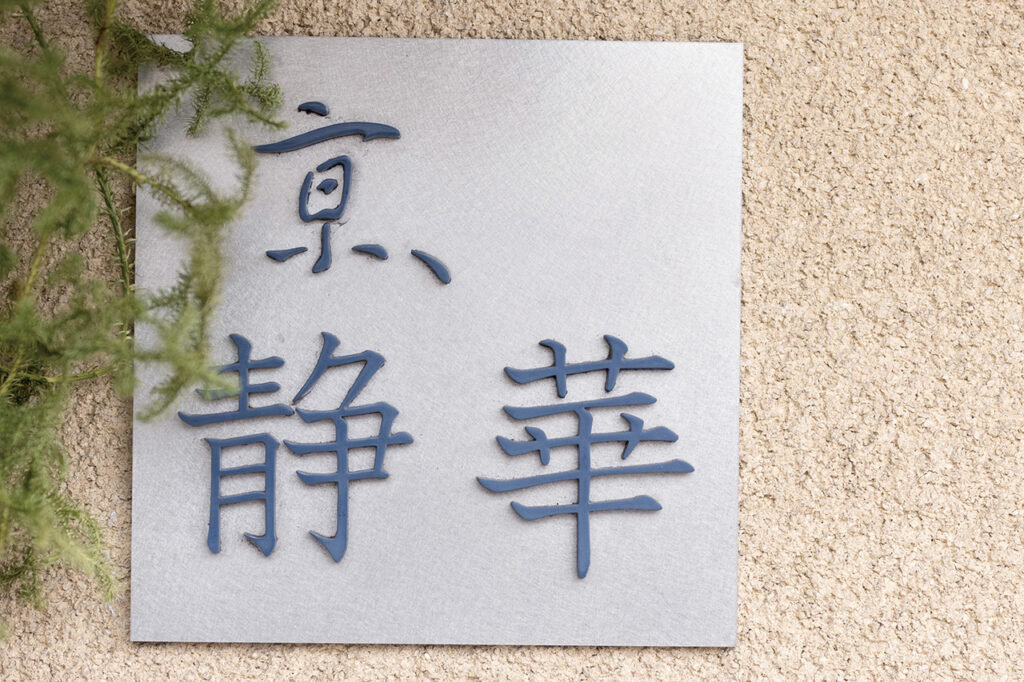

Chef Profile / Shizuo Miyamoto. Born in Kanagawa Prefecture. After closing Seika in Hamamatsu City, he went to Beijing to study. After returning to Japan, he fell in love with the streets of Kyoto, which are similar to those of Beijing, and opened "Kyo, Seika" in 2008.
Sumiyoshi is one of Kyoto's representative Chinese restaurants. The chef, influenced by Japanese restaurants, combines Japanese ingredients with Chinese cuisine to create dishes with a new sensation that can only be enjoyed here. The menu is full of flavor at reasonable prices, and the desserts are also well received. The atmosphere of the restaurant is like a stylish bar, where you can enjoy conversations with the chef and the kitchen. The restaurant is also listed in the Michelin Guide's Bib Gourmand.
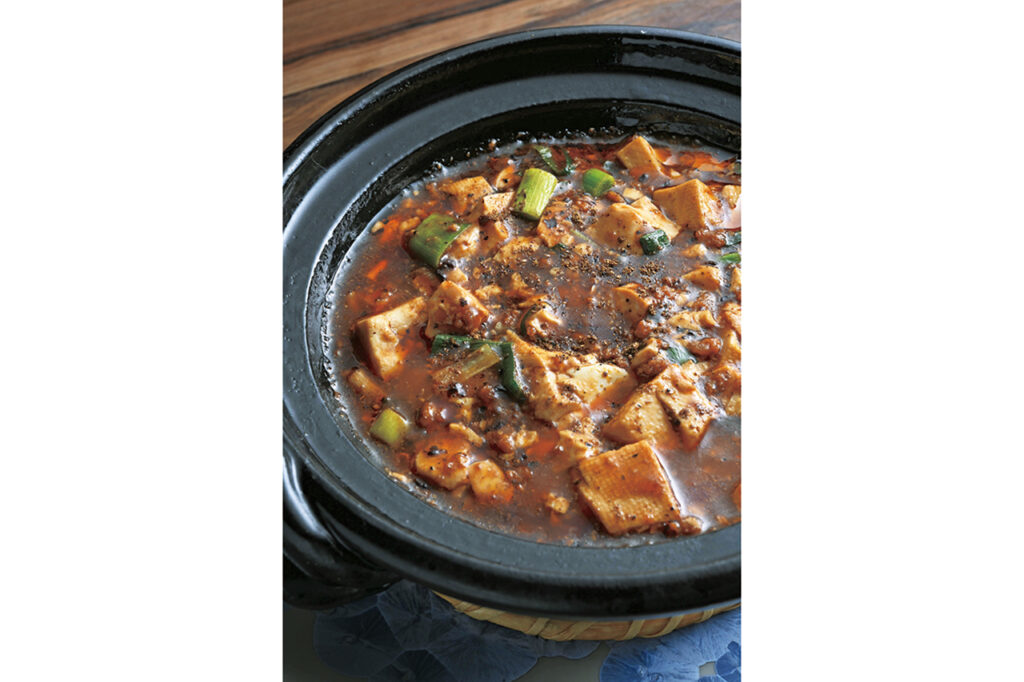
Szechuan Bean Curd with Bean Sprouts (1,500 yen). Served in an earthenware pot, you can enjoy it hot with rice.

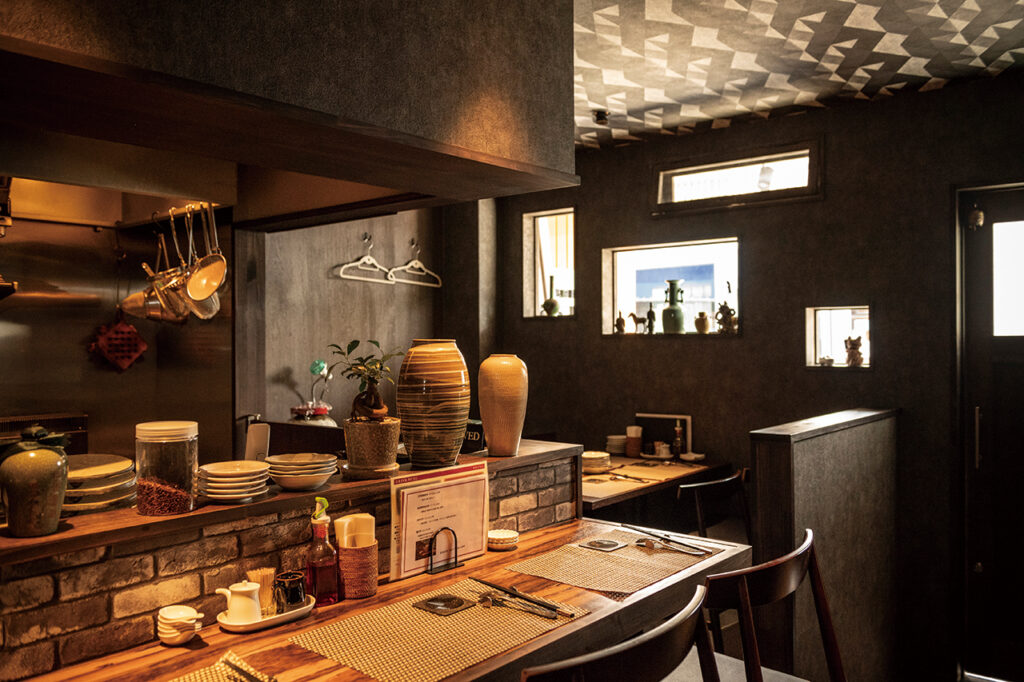

Chef Profile / Naoto Sumiyoshi. Born in Hyogo Prefecture. After gaining experience at a famous hotel in Kansai, he opened a restaurant in Kyoto with the aim of creating a "relaxing space = private kitchen.
Shuka is located in a quiet residential area in Kita-Shirakawa. The restaurant is listed in the Michelin Guide's Bib Gourmand and is popular for its courteous service. The clean interior has a stylish café-like atmosphere. The restaurant offers high quality Chinese cuisine that makes active use of local ingredients. Lunch sets are available in four types, each from 2,400 yen, while dinner is mainly a la carte and reservations are required in advance. Enjoy the excellent Chinese cuisine prepared with care and attention in a relaxing atmosphere.
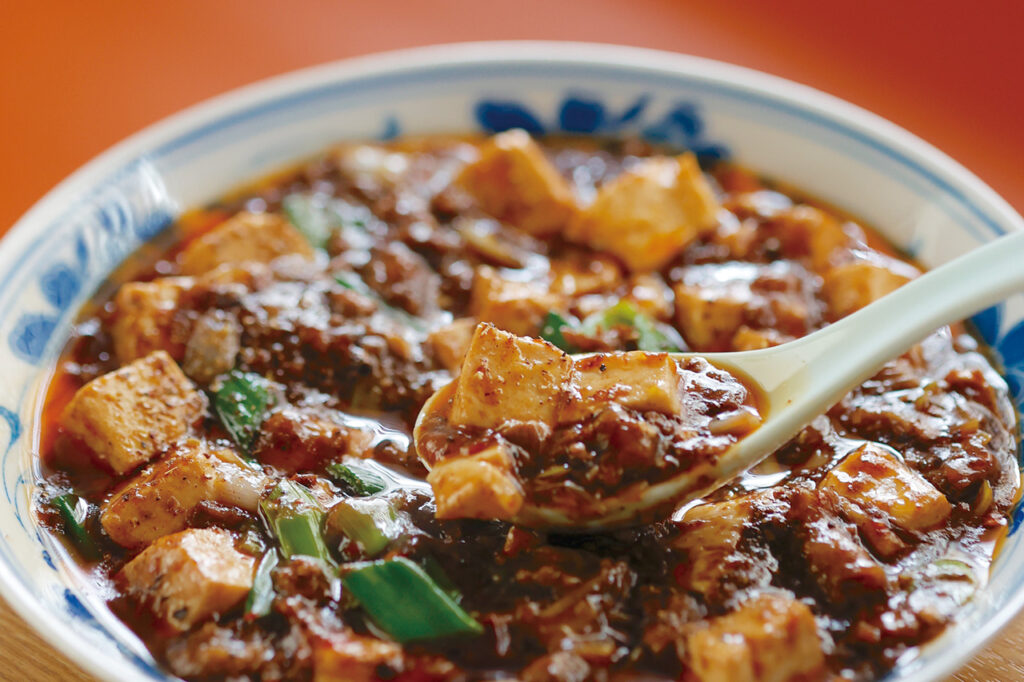
Mapo Tofu with Japanese Beef Sinew 2,200 yen. The tofu is from a tofu store that is a favorite of ryotei (Japanese-style restaurants). The presence of the tender suji meat, which has been seasoned in advance, brushes up on the standard dish, Bean Curd Bean Curd with Bean Curd.

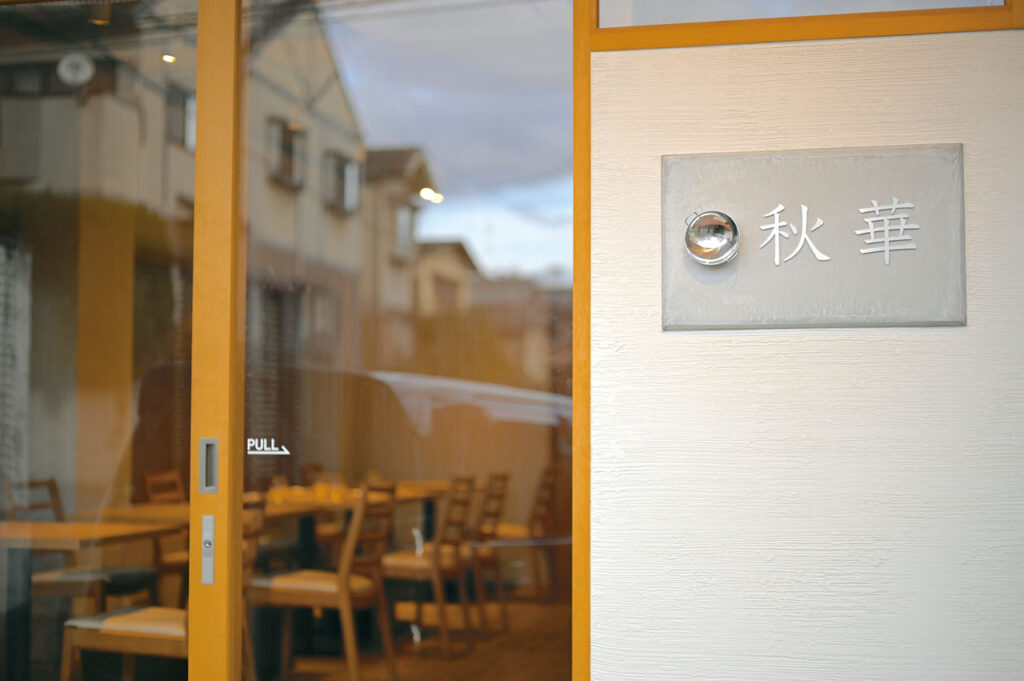

Chef Profile / Tomoaki Suzuki. Born in Hamamatsu City, Shizuoka Prefecture. After spending 11 years under Chef Miyamoto when the famous restaurant [Kyo, Shizuka] in Okazaki, Kyoto was located in Hamamatsu, he became independent.
Ipanna Tanaka attracted a lot of attention when it opened in December 2020 on the former site of Shanghai Band. Not only was it a hot topic, but it quickly became a popular restaurant that is difficult to make reservations for because of its high level of creative Chinese cuisine at a reasonable price, and it was listed in the Michelin Guide's Bib Gourmand. Reservations can only be made by table check, and the menu currently consists only of omakase courses. (Additional dim sum dishes are available separately.) The restaurant is open to junior high school students and older.
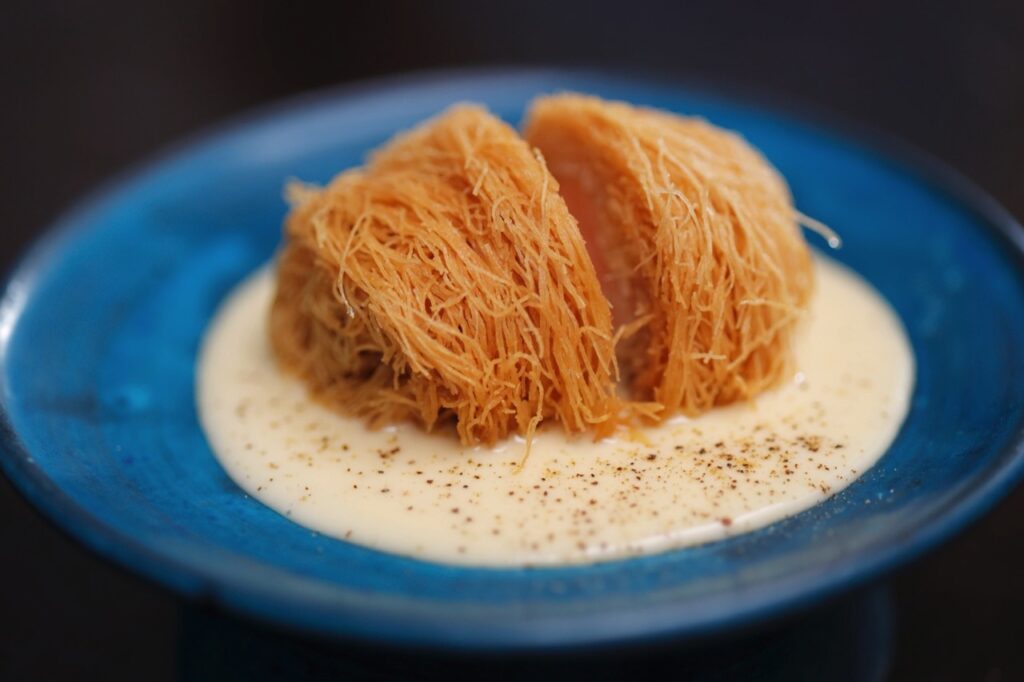
Gadaihu (dragon's beard roll) 880 yen. Shrimp and hamo (pike conger) surimi wrapped in a noodle-like batter and slowly deep-fried. Goes great with the refreshing mayo sauce (one of the dim sum dishes that can be added to the omakase course).

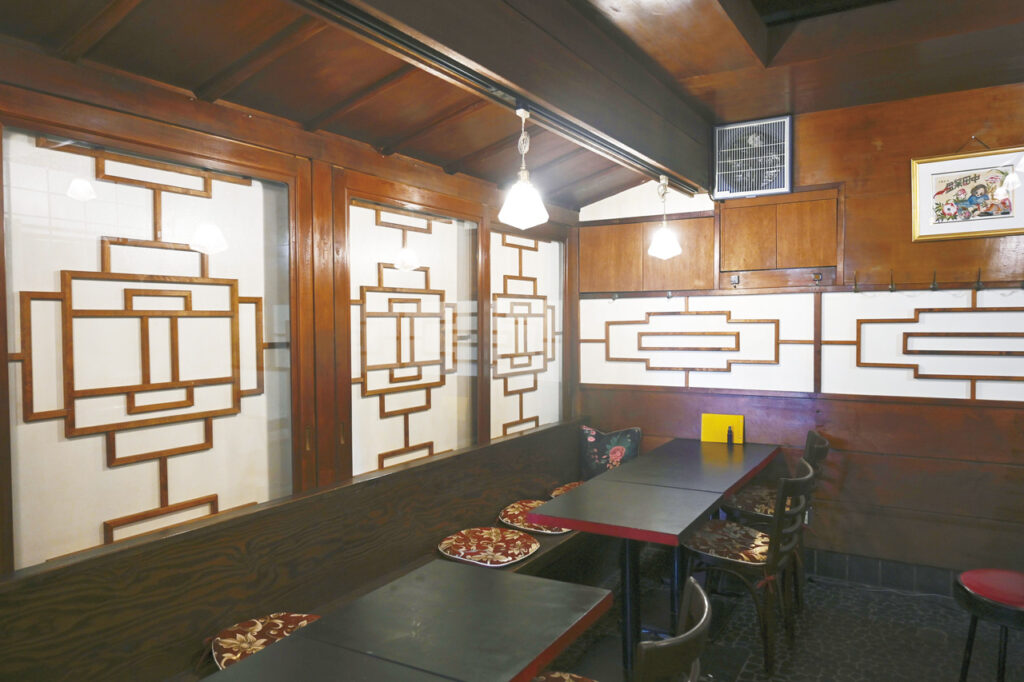

Chef Profile/Owner Chef Shinpei Tanaka studied Chinese cuisine at a hotel for over 20 years and became independent in December 2020. His hobby is going out to eat with his wife.
After passing through the tasteful approach in the alleyway of Takoyakushi-dori, you will find [Hirosawa], which is housed in a machiya (townhouse) that is over 100 years old. At the counter, where you can simultaneously admire the elegant Japanese garden and the chef's cooking, you can relax and enjoy dishes made with seasonal ingredients. The menu is limited to the 25,000-yen course, which is a combination of French and Japanese techniques based on modern Chinese cuisine, and is a perfect reflection of the chef's experience. Drinks include wine, Shaoxing wine, and Chinese tea that is brewed in two days. Reservations can be made online one month in advance.
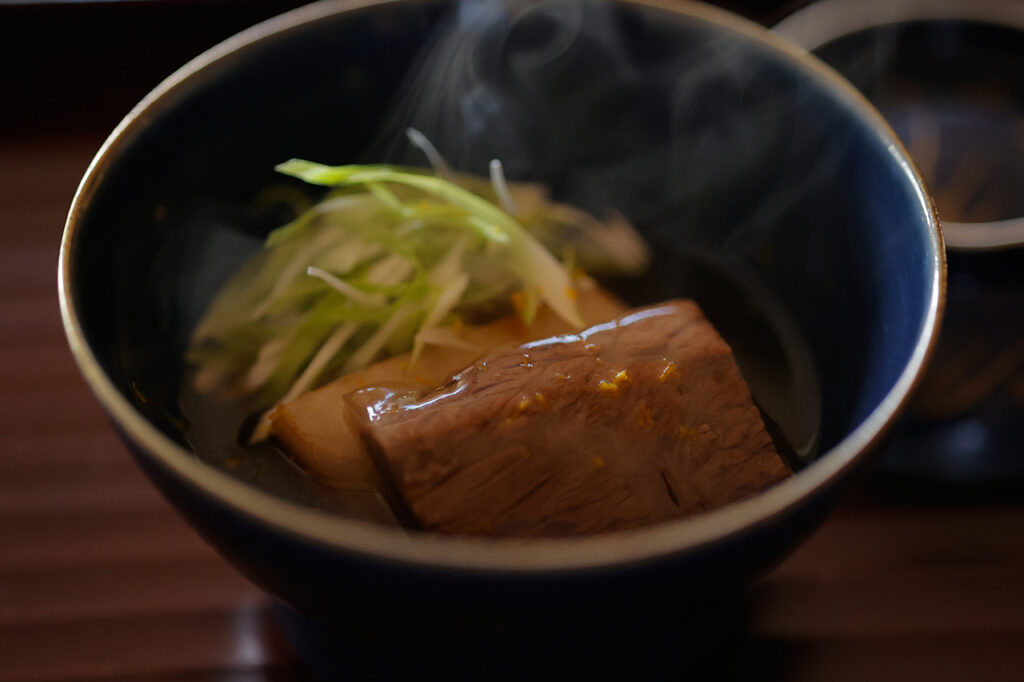
The dish is an example of an omakase course from 25,000 yen. Chaozhou-ni Wagyu Beef is a dish of beef cooked with aromatic vegetables and spices, fried cabra, and a broth bean paste cooked with beef.

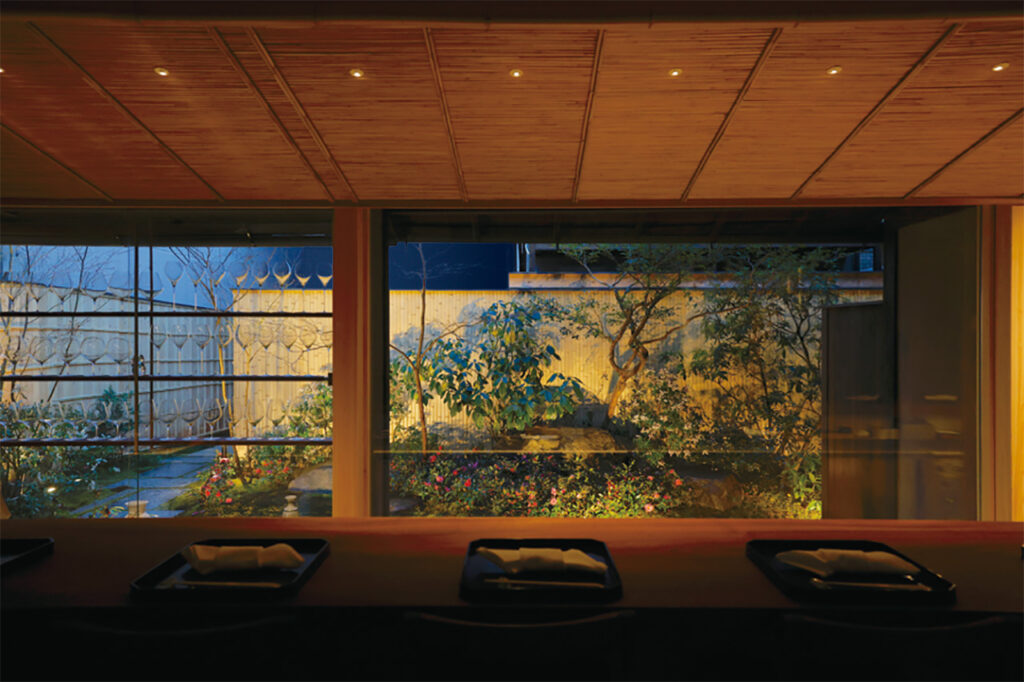

⚫︎ Chef Profile / Owner Chef Masaya Hirosawa. Born in Aichi Prefecture. After training at Akasaka Rikyu in Tokyo, he worked as a chef at Renka in Kyoto and Renshin in Kitashinchi, Osaka, before expanding his knowledge in Hong Kong and fresh fish restaurants.
Thank you for reading this article. We would love to hear your recommendations for Chinese restaurants in Kyoto that you would like to eat at even if you have to wait in line!
We sincerely look forward to your responses!
Loading...
Over 600 interviews per year! An order site carefully selected by the editors who knows Kyoto and Shiga.
nowOfficial LINE friend registration500 yen OFF coupon is being issued!
Distributed every Friday morning at 8:00 am! From new restaurant information to event information that we want to share with you, We deliver articles about Kyoto that are useful to know. About 20,000 people have registered.Click here to add a friend!
 News
News Feature article
Feature article Featured event
Featured event